Day 8 (25 February) was spent travelling as we flew from Santa Marta to Pereira via Bogota and then spending the night at the very comfortable Movich Hotel in Pereira. In the morning we drove up to the Otun Quimbaya Lodge in the central Andes of Colombia. We stopped at a number of places on the way up and saw Green Jay, Moustached Puffbird, Saffron Finch, Grey-breasted Wood-wren and Cauca Guan.
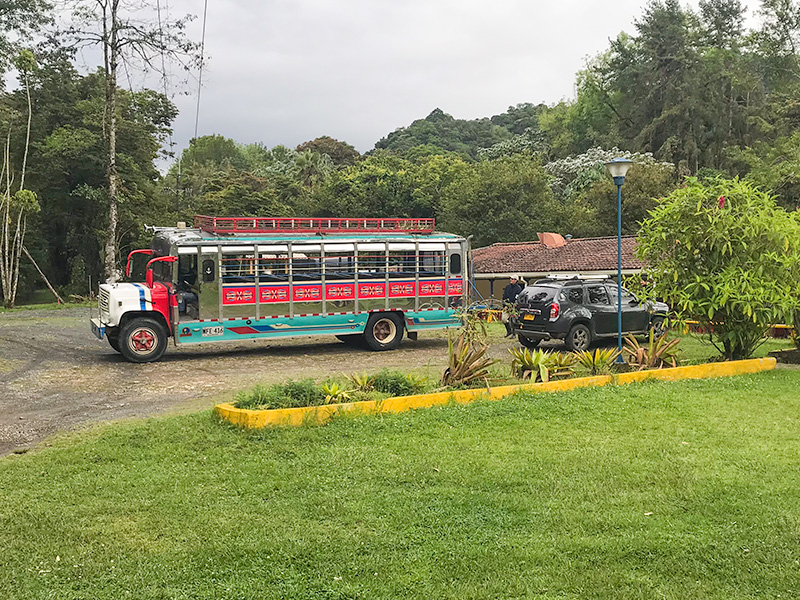
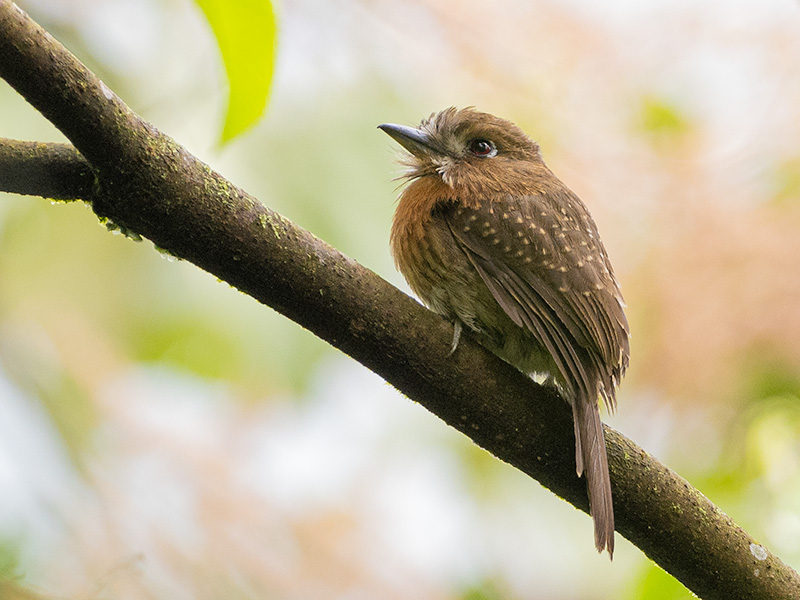
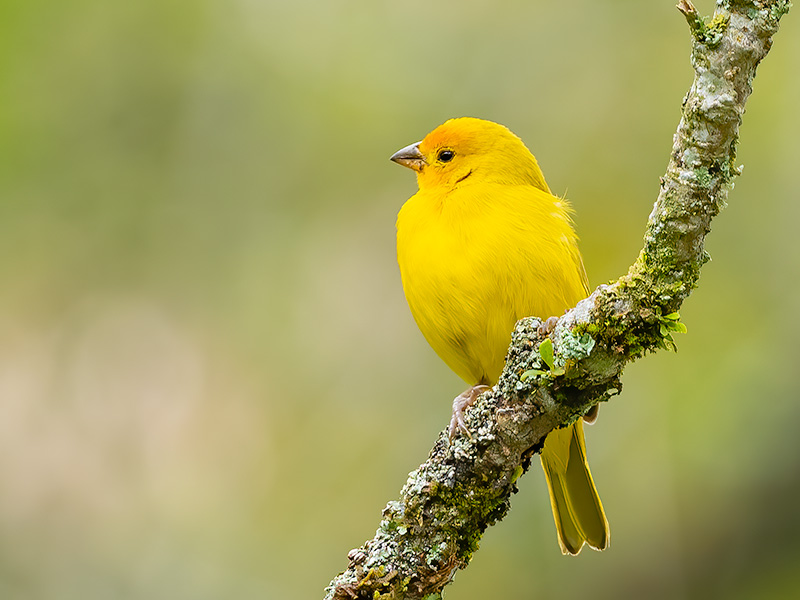
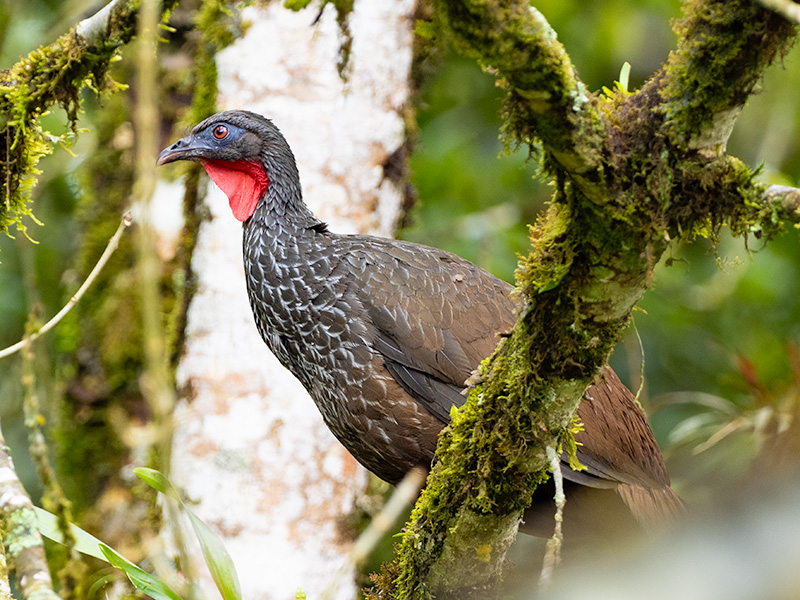
After lunch at the lodge we continued birding along the road passing the reserve, where we photographed Red-ruffed Fruitcrow, Cauca and Wattled Guan, Black Phoebe, Torrent Tyrannulet, Blue-necked Tanager and Flame-rumped Tanager.
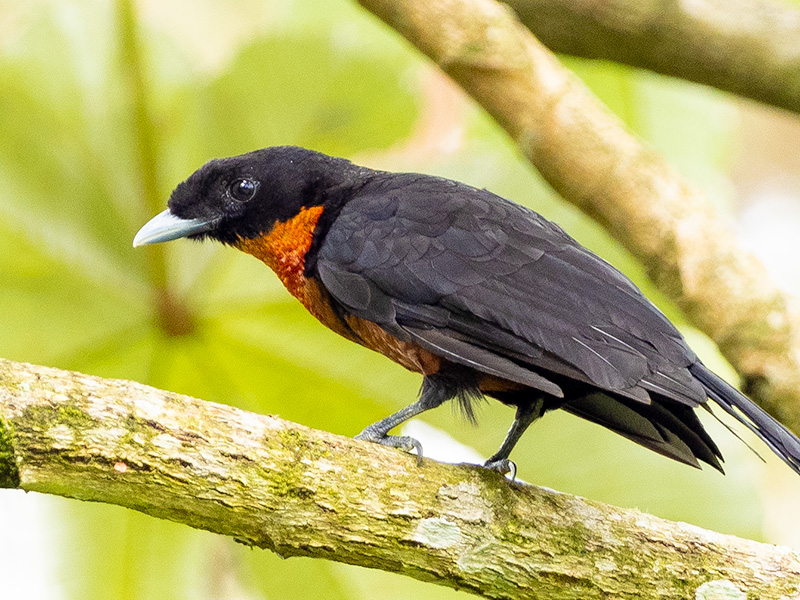
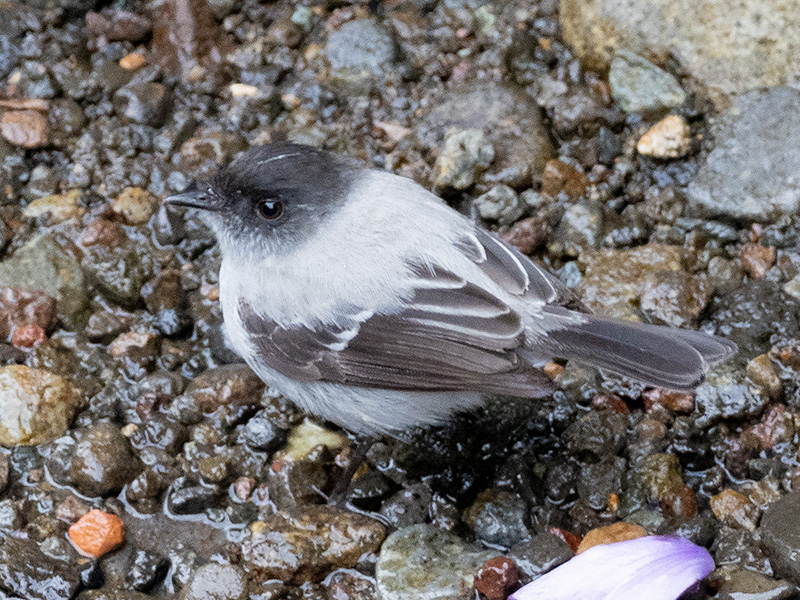

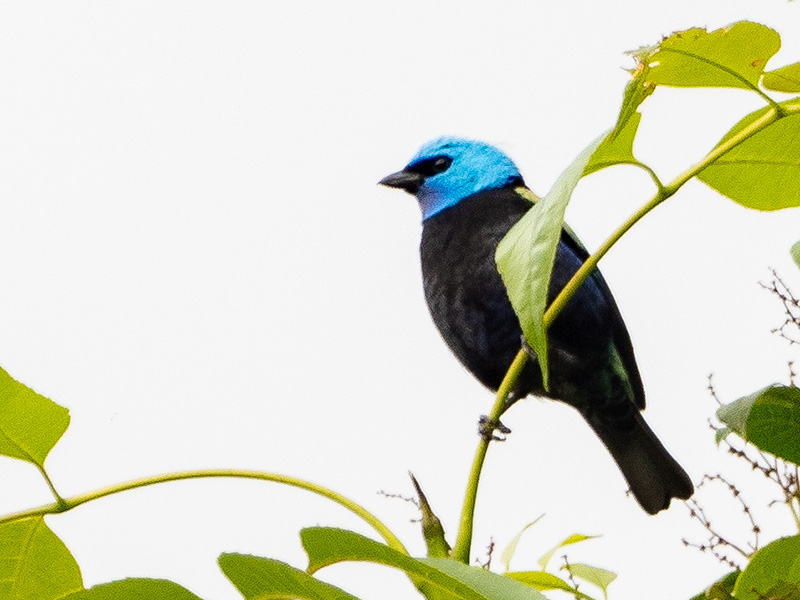
On the morning of day 10 (27 February) we made an early start from the Otun Quimbaya lodge with the goal of seeing the antpittas, which are a major target for birders within the park. We drove up the rough road to El Cedran and started birding in the pre-dawn gloom. It was so dark we could only get record shots of the Orange-billed Nightingale-thrush and the Andean Motmot. But we were lucky that by the time we saw the very rare, near-endemic Hooded Antpitta there was just enough light to get a reasonable shot, although at iso 16,000. Later in the morning we saw Collared Trogon, Green Jay, Green Honeycreeper, Sickle-winged Guan and Bronze-olive Pygmy-tyrant.
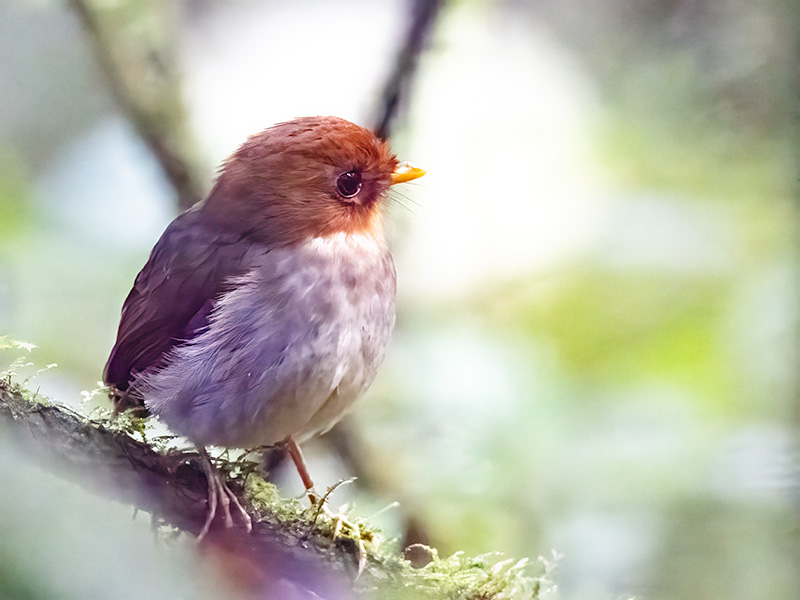
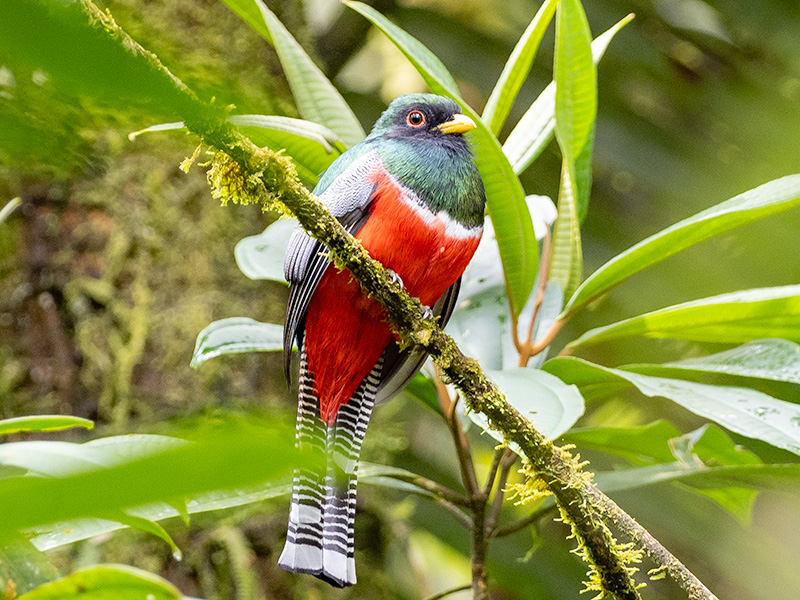
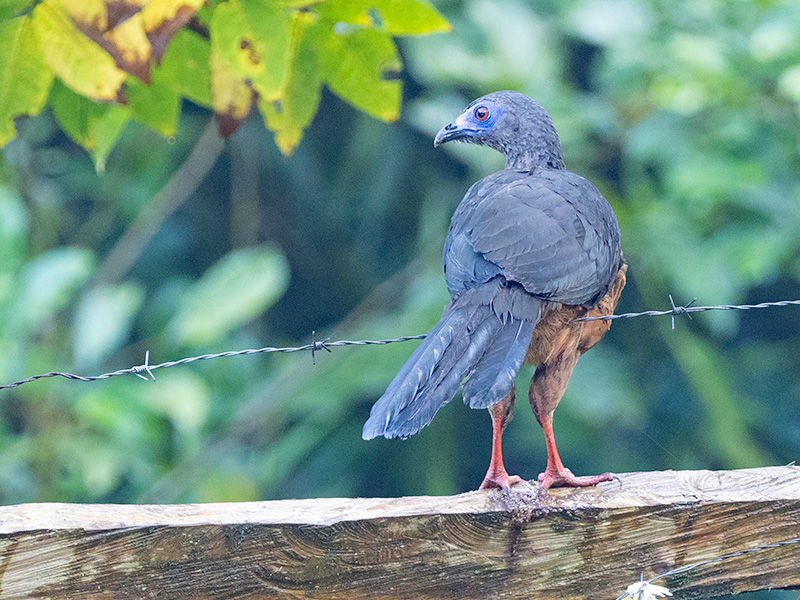

Later in the morning we started the journey to our next destination, the Montezuma Ecolodge in the Tatama National Park. We passed through Pereira once again and then stopped for coffee in Apia, which is a lively town in the middle of a picturesque coffee growing area. On arrival at Montezuma lodge we found the accommodation was basic but the excellent birding in the area compensated for this to some extent. At the lodge there were a number of well-stocked feeders that were drawing in a number of species of hummingbird, including Empress Brilliant, Rufous-gaped Hillstar and Velvet-purple Coronet.
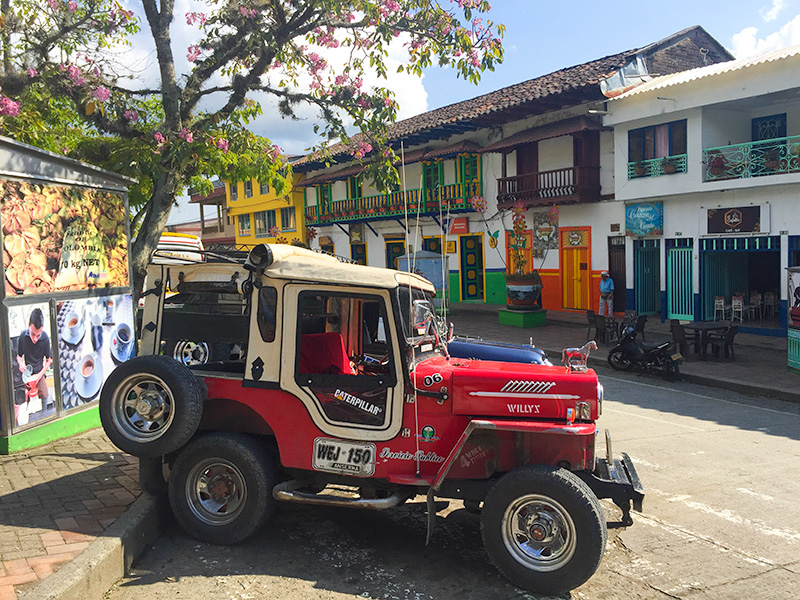
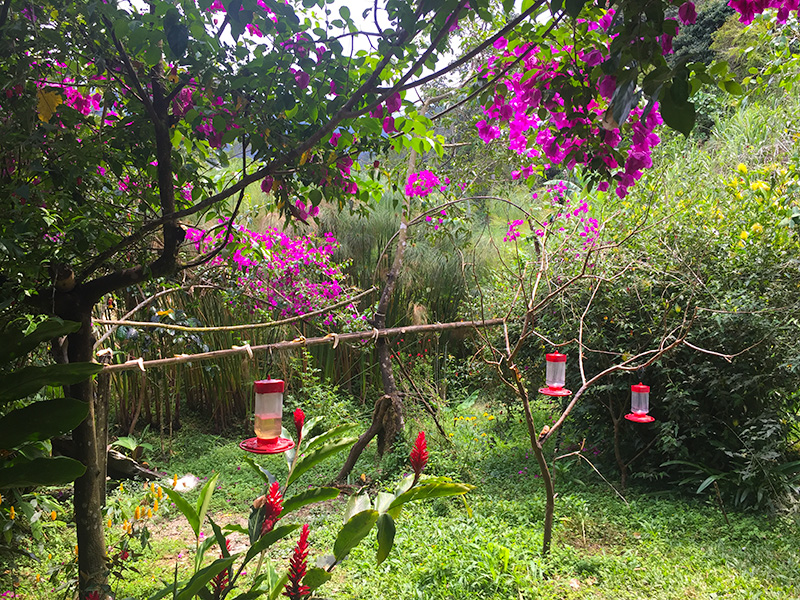
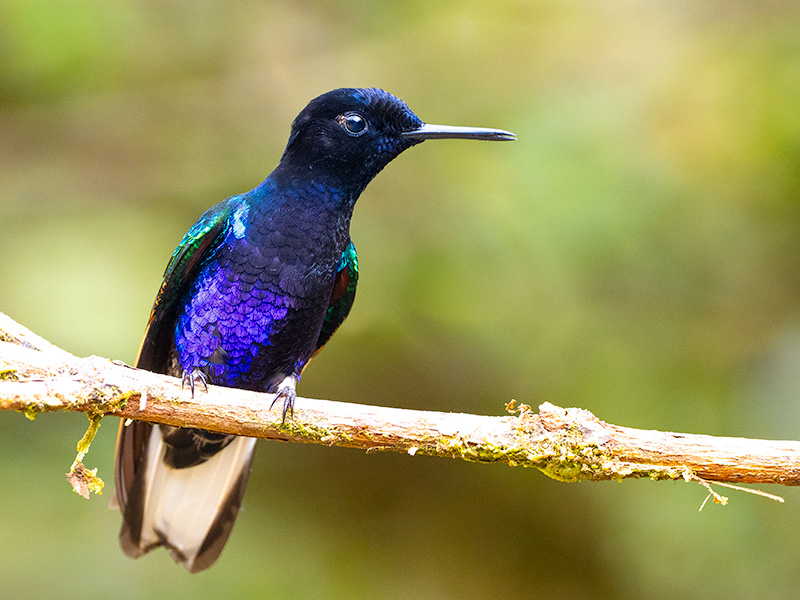
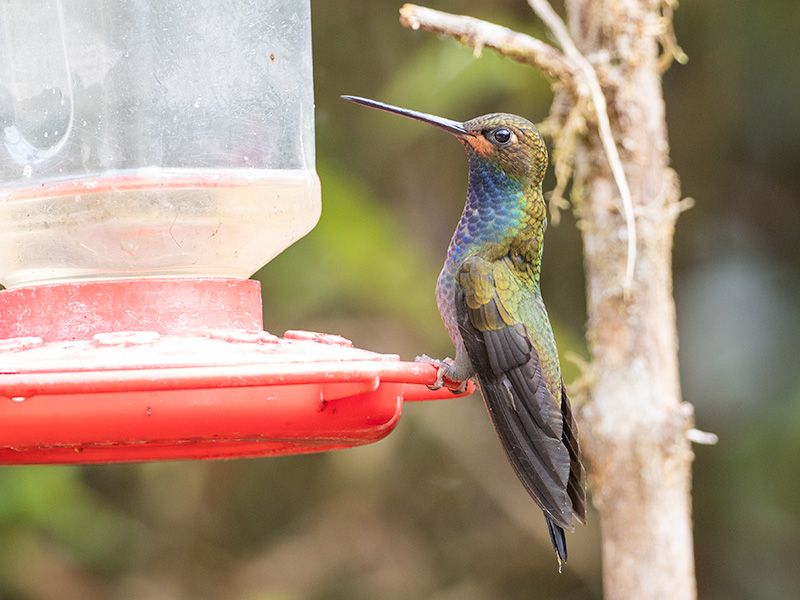
We had two full days in the Tatama National Park and began Day 11 (28 February) by driving for an hour to the top of the ridge in the upper parts of the park. On the way up we saw a Swallow-tailed Nightjar on the road before arriving at a group of feeders near the summit. There we had a chance to photograph Collared Inca, Buff-tailed Coronet and the endemic Chestnut-bellied Flowerpiercer.
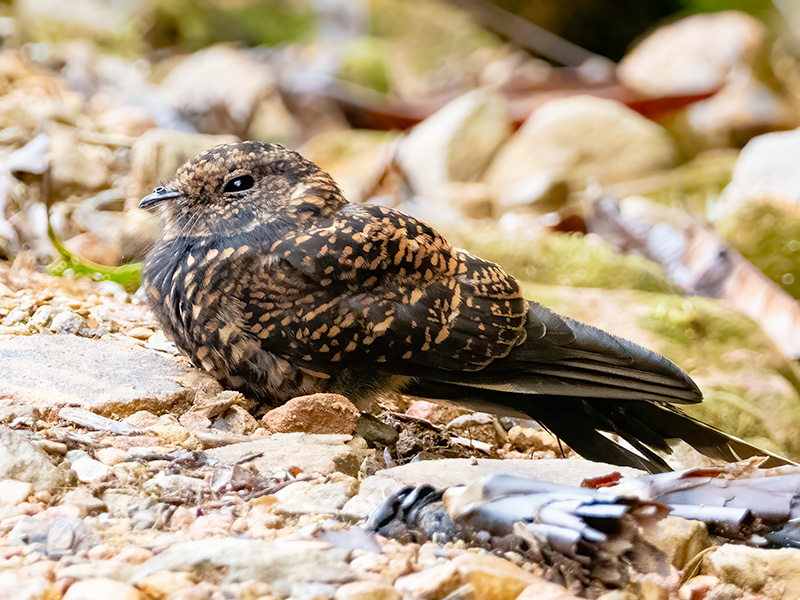
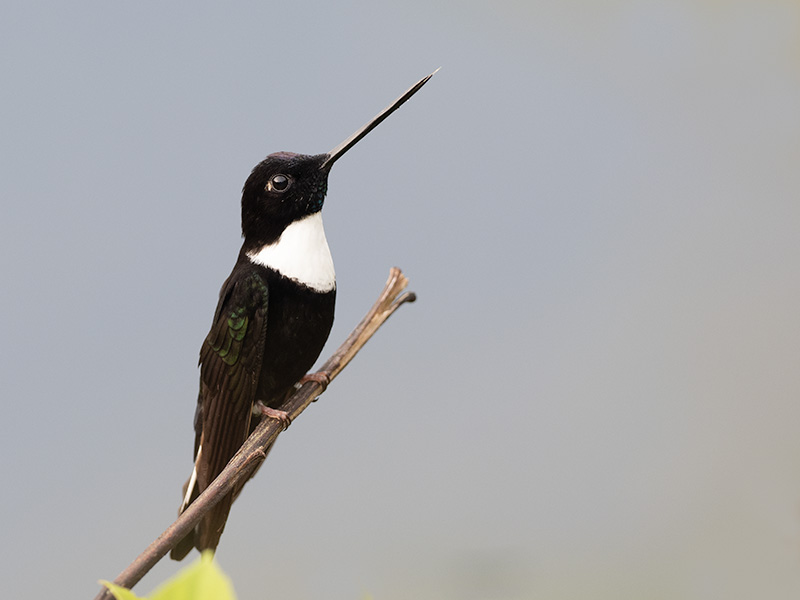
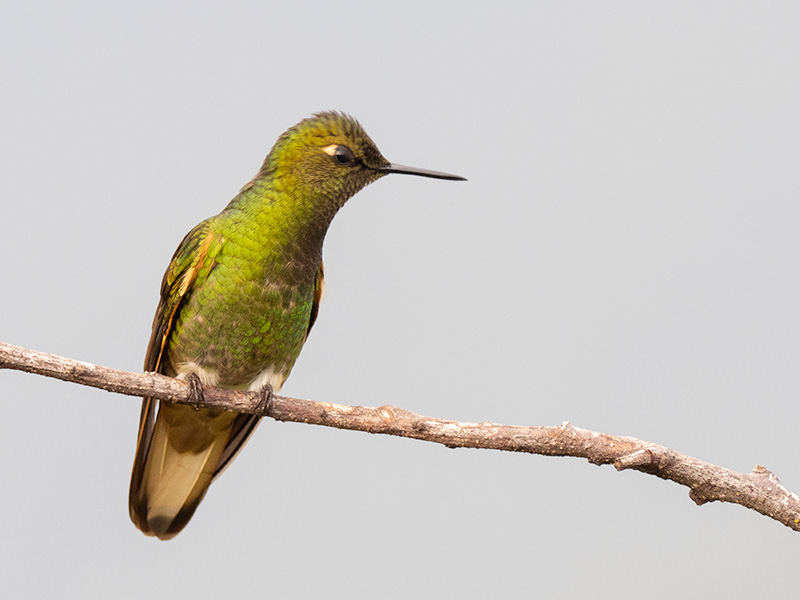
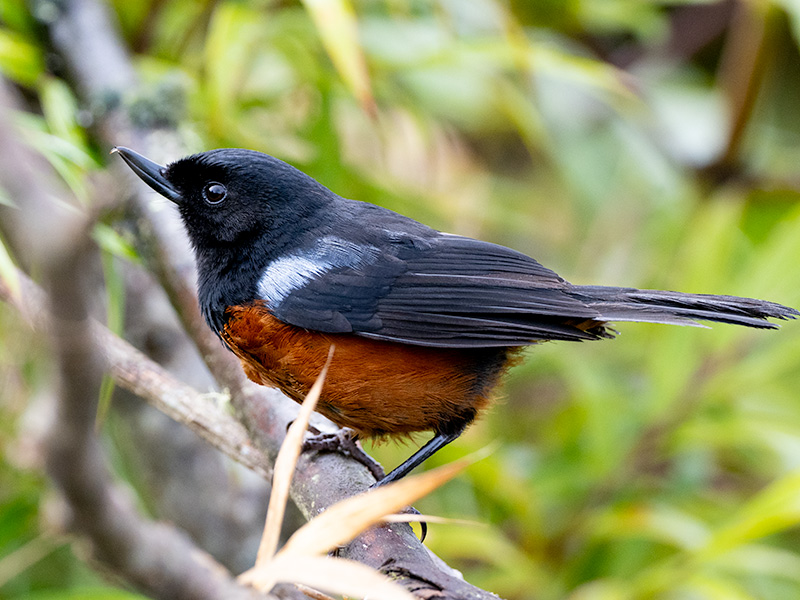
During the remainder of the morning and early afternoon we gradually worked our way down the road back to the lodge, which is only used by the Montezuma Lodge and members of the military who have a small station near the top of the ridge. We birded the forest margins and the feeders placed by the road to draw out certain species. We got good photos of the Tourmaline Sunangel, Cinnamon Flycatcher, Masked Flowerpiercer and the endemic Gold-ringed Tanager. We were also very fortunate to have good views of Munchique Wood Wren, which is endemic to the western Andes of Colombia and was only first observed in the 1980s.
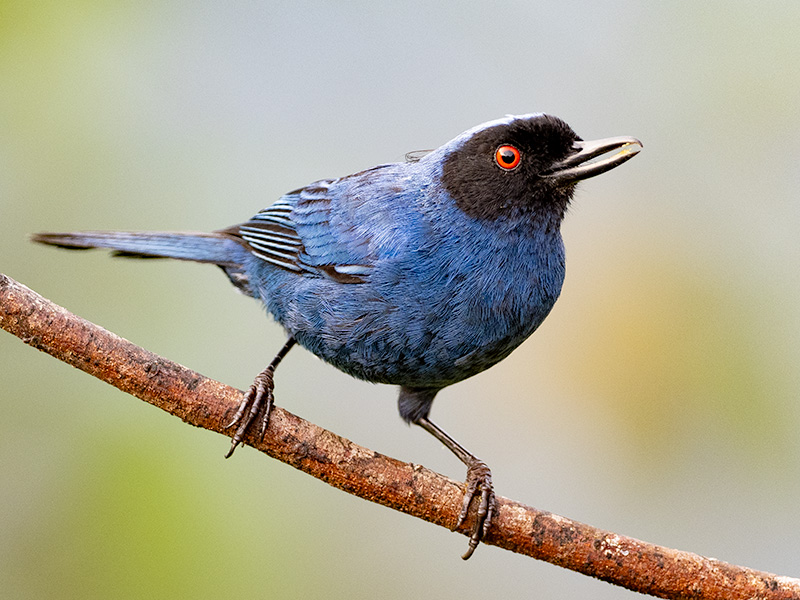
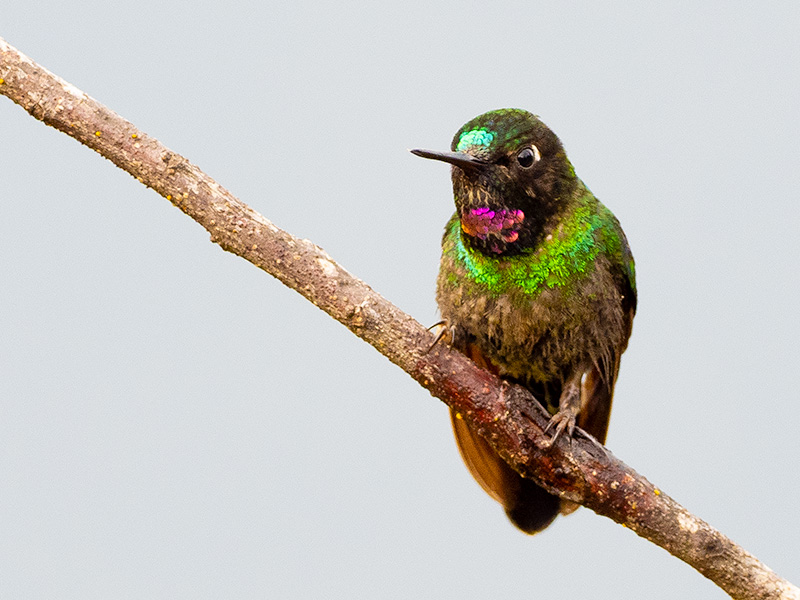
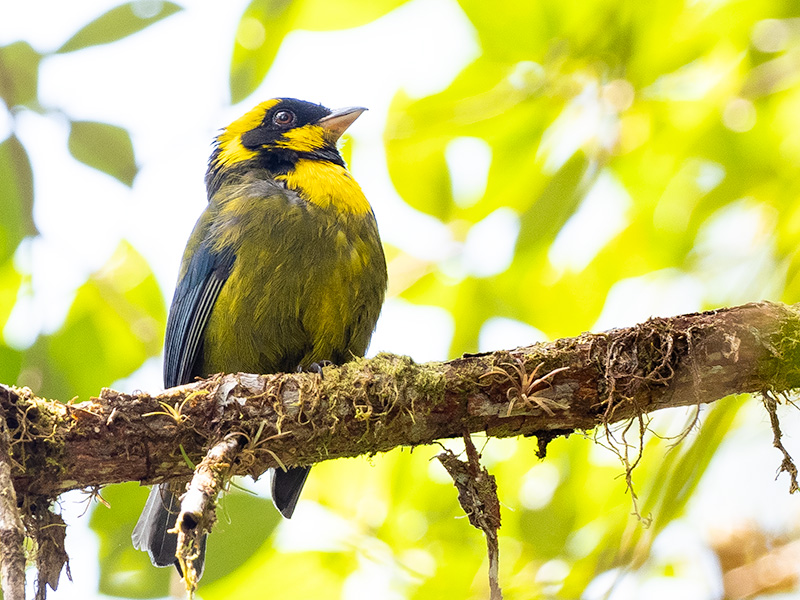
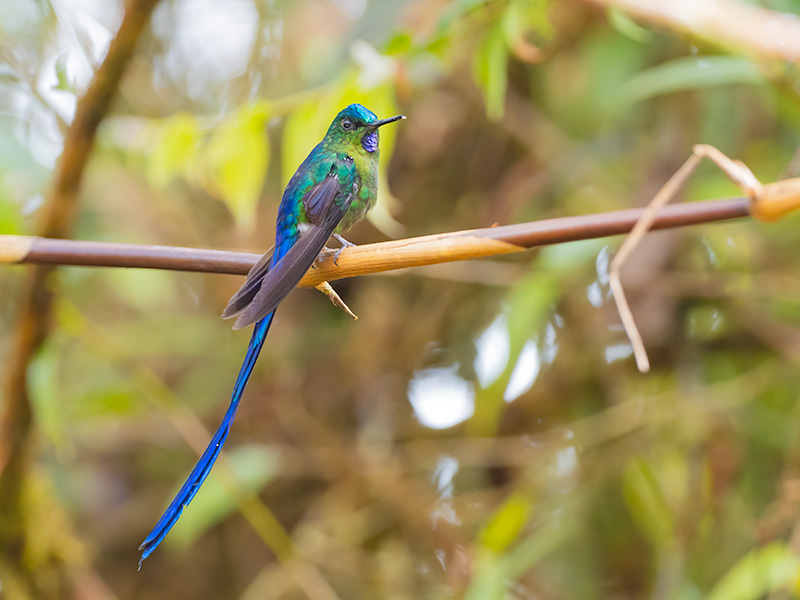
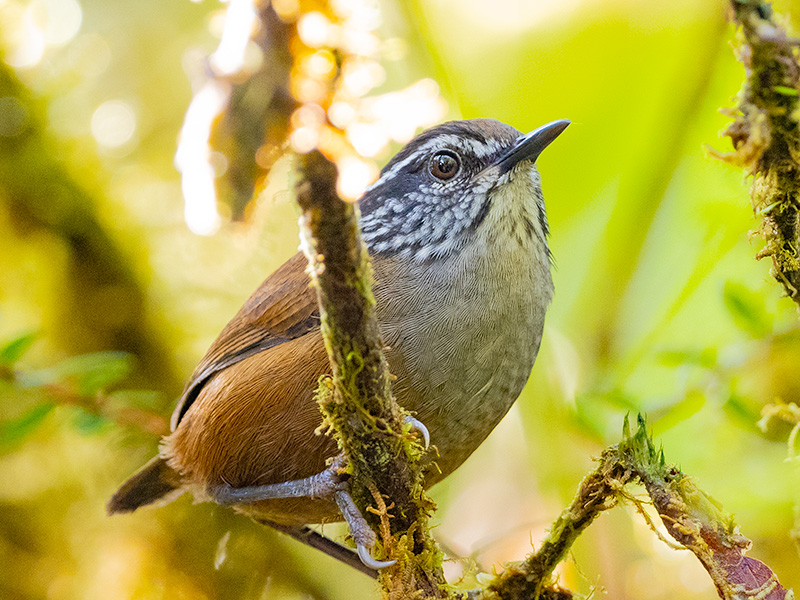
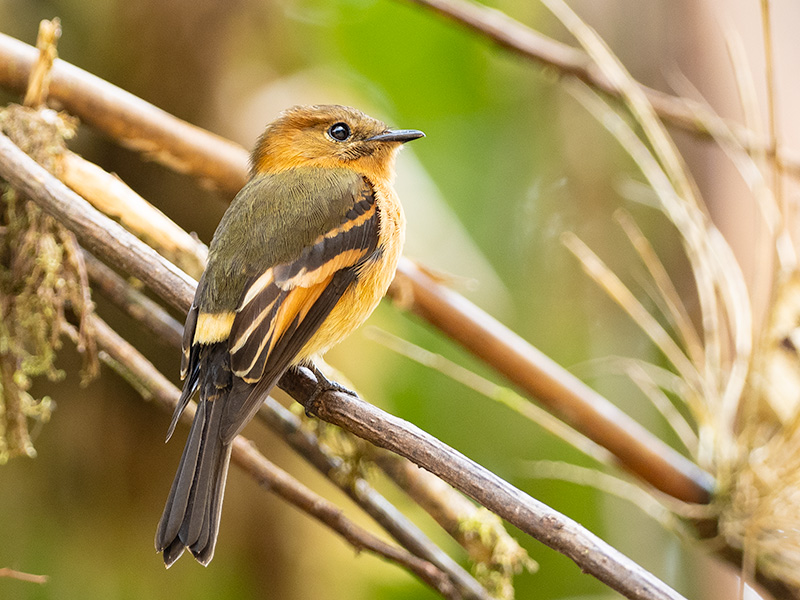
The morning of day 12 (29 February) was devoted to birding the mid-levels of the road above the Montezuma lodge. Photographing birds in tropical rain forest is never easy as they can be high in the canopy or deep within the dense leaves and branches, with the mist and low cloud also adding to the problems. So we only got record shots of a number of interesting species. However, we got acceptable photographs of Club-winged Manakin, Common Tody-flycatcher, Golden-collared Honeycreeper and Handsome Flycatcher.
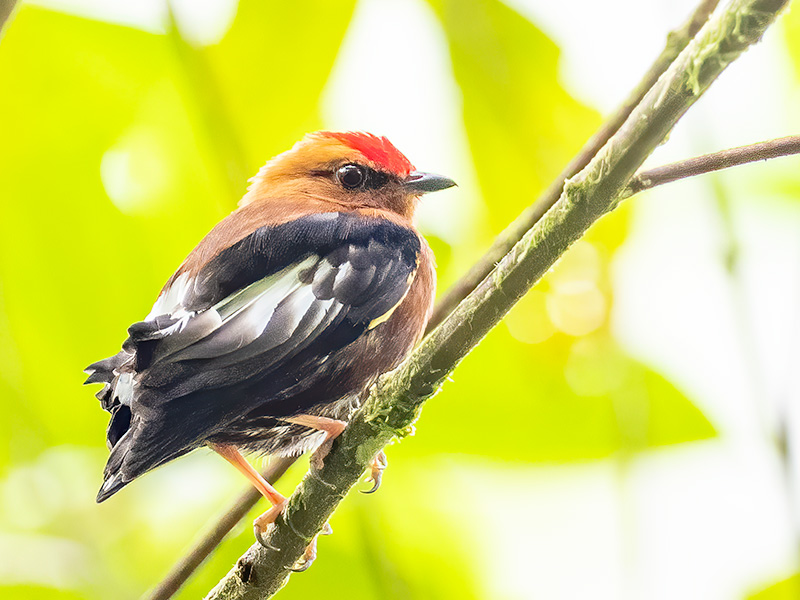
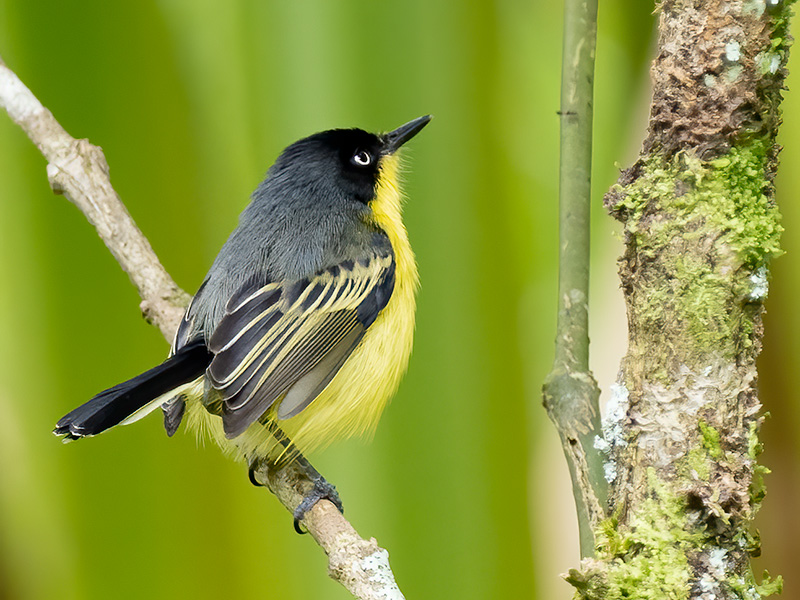
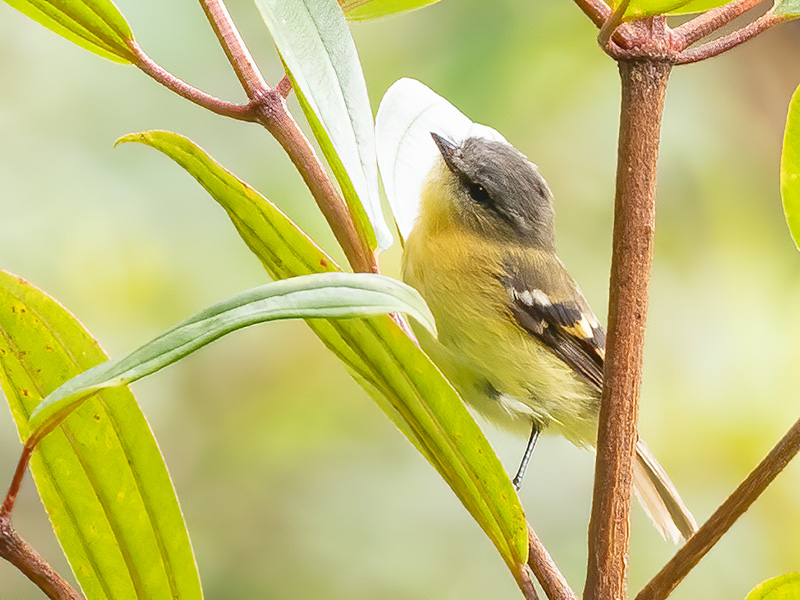
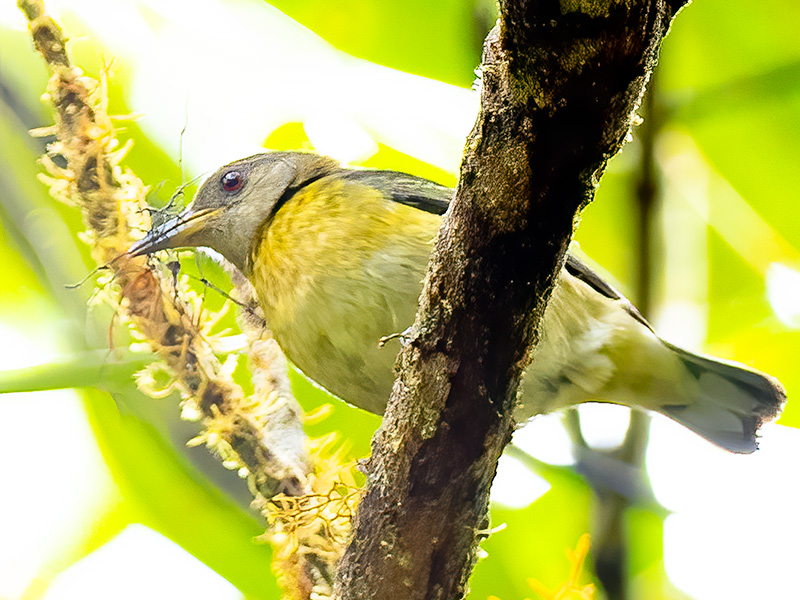
In the late afternoon we birded around the Montezuma lodge, which proved very productive and we saw Smoky-brown Woodpecker, Greyish Piculet, Scrub Tanager, Slate-coloured Seedeater and Red-faced Spinetail.
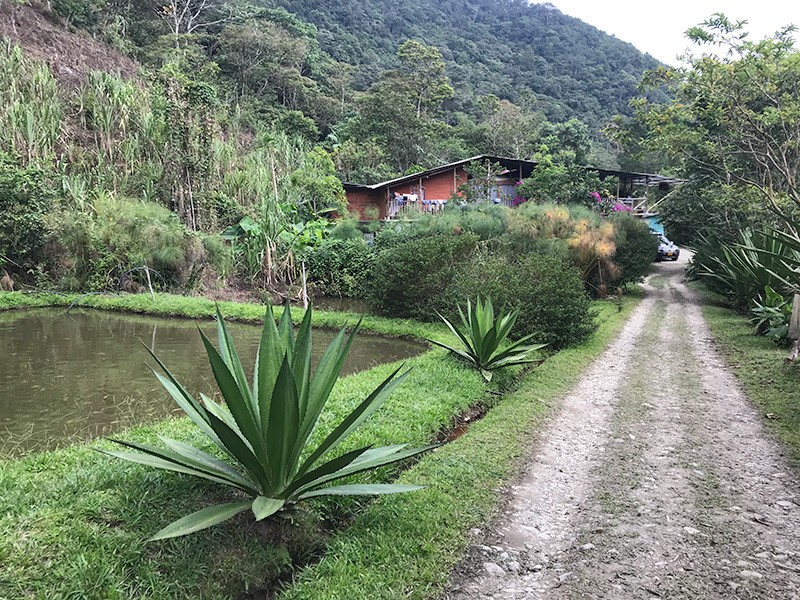
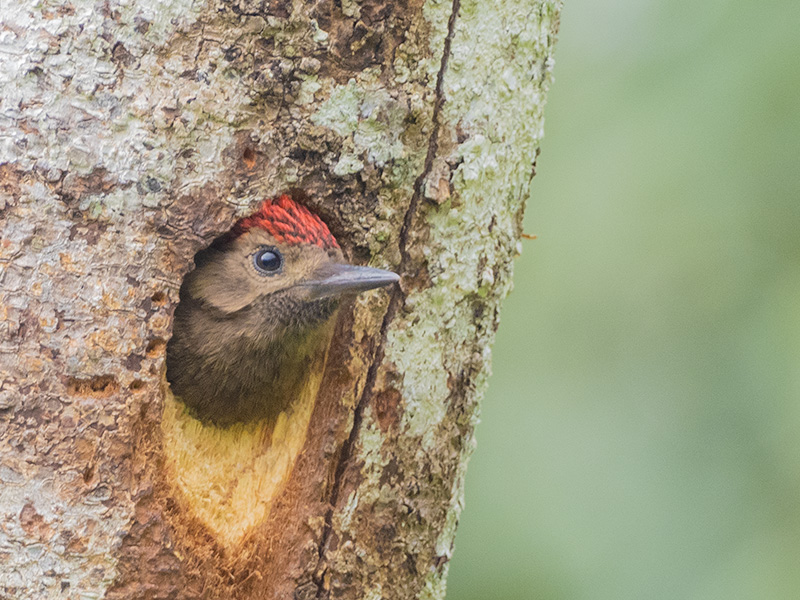
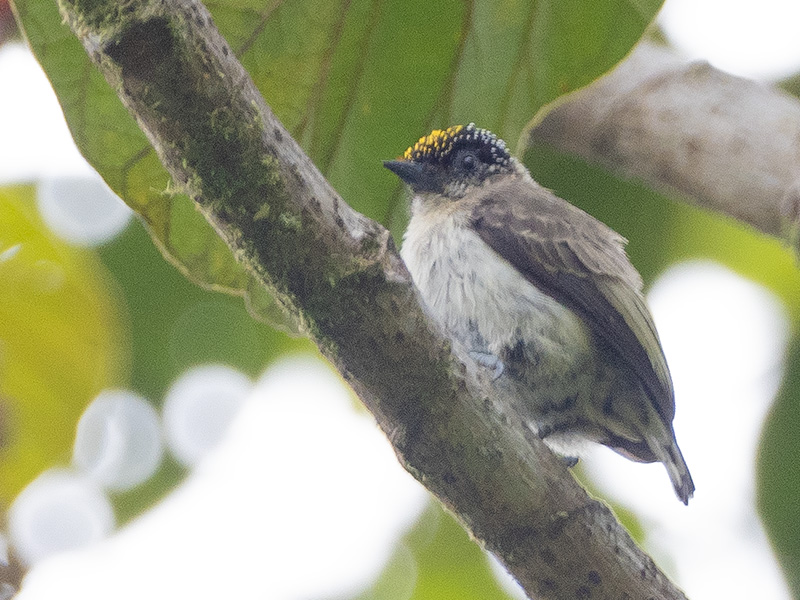
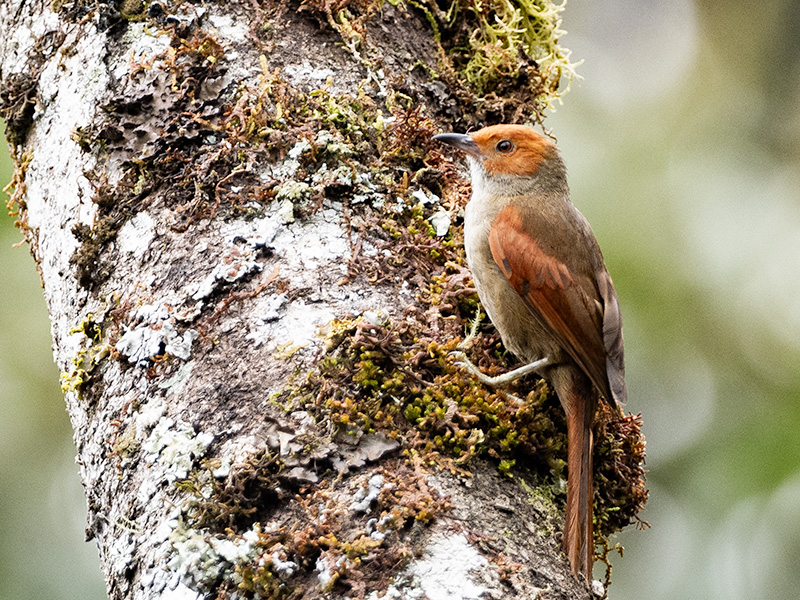
Day 13 (1 March) was basically a travel day when we drove from Montezuma in the Tatama National Park to the Rio Blanco Nature Reserve just to the east of Manizales. This is a very nice lodge with several hummingbird feeders where we had a very comfortable room. The reserve is famous for its antpitta feeding stations that routinely draw in several species of antpitta along with other birds. So early next morning one of the staff of the reserve took us to the first of the feeding stations to see the Bicoloured Antpitta. The bird was very obliging and posers for several minutes in the early morning light. It’s a tribute to modern cameras that I could get a reasonable photograph in such gloomy conditions that needed an iso of 20,000 at a shutter speed of 1/30 second. After a while we moved to the second station, which was a small clearing just of the road above the lodge. In the improving light we saw the Chestnut-crowned Antpitta along with the Brown-banded Antpitta.
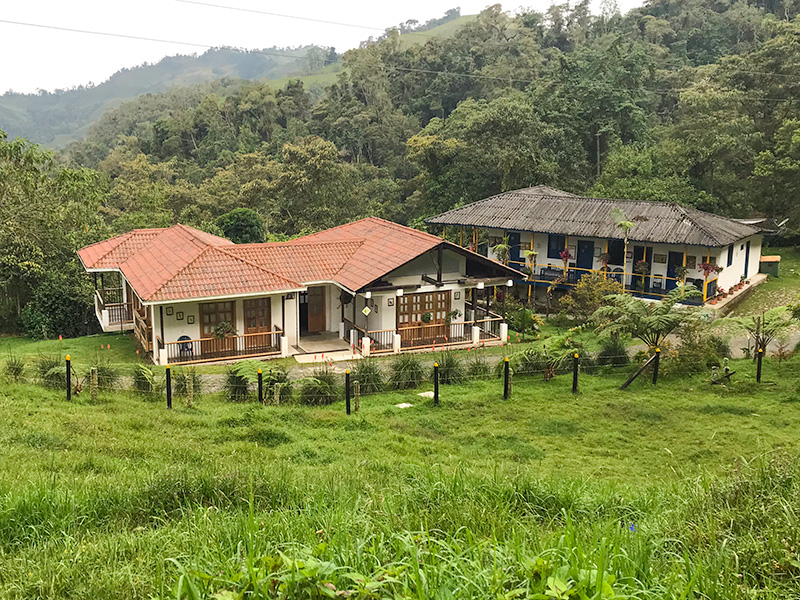
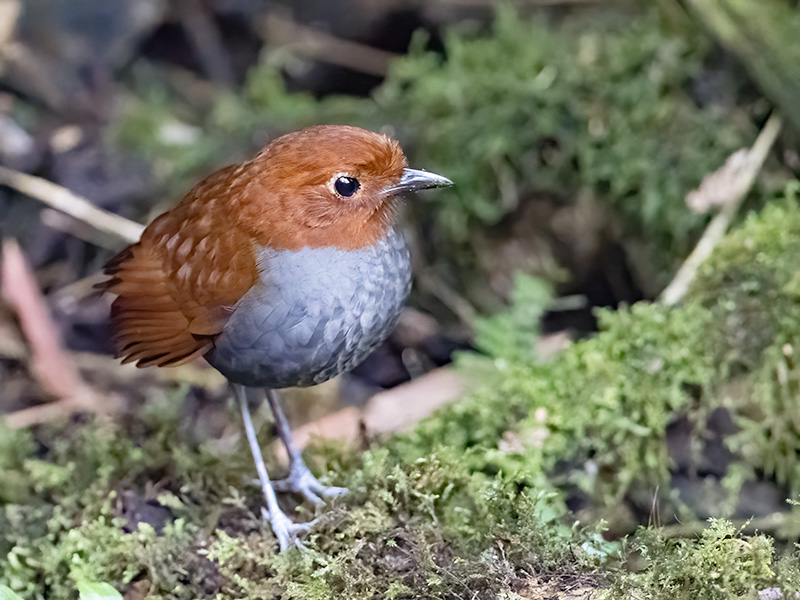
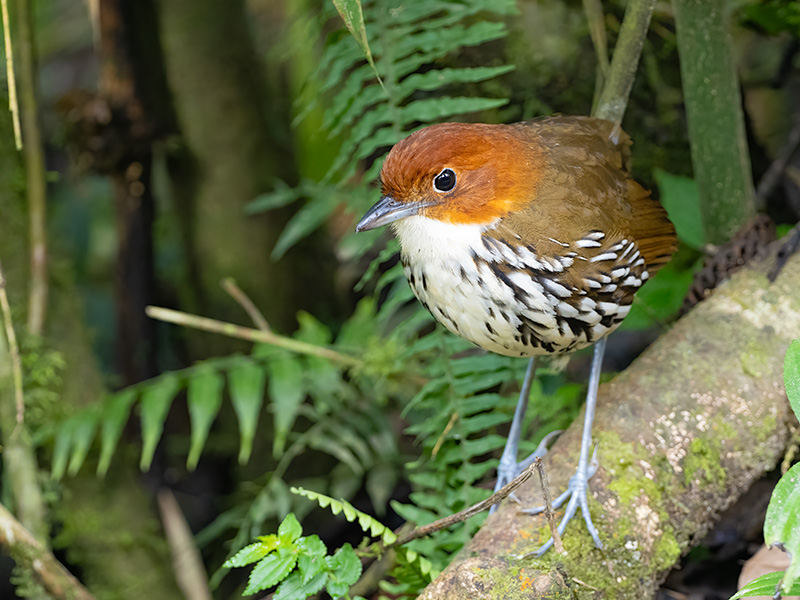
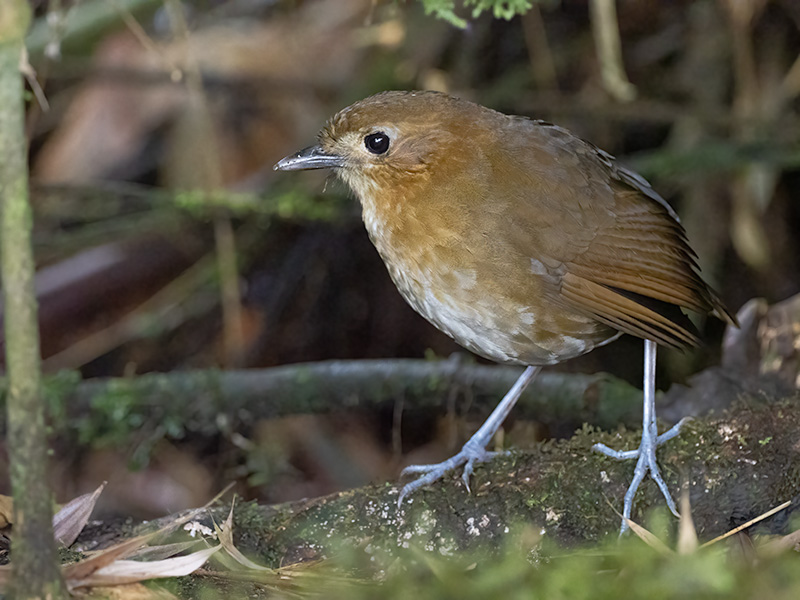
The food at the antpitta feeding stations drew in other birds including the very colourful Green-and-black Fruiteater and Slate-throated Redstart. After spending time at the feeding stations we worked our way along the road above the Rio Blanco lodge where we photographed Golden-plumed Parakeet, Plushcap, Fawn-breasted Brilliant and Rufous-crowned Tody-flycatcher.
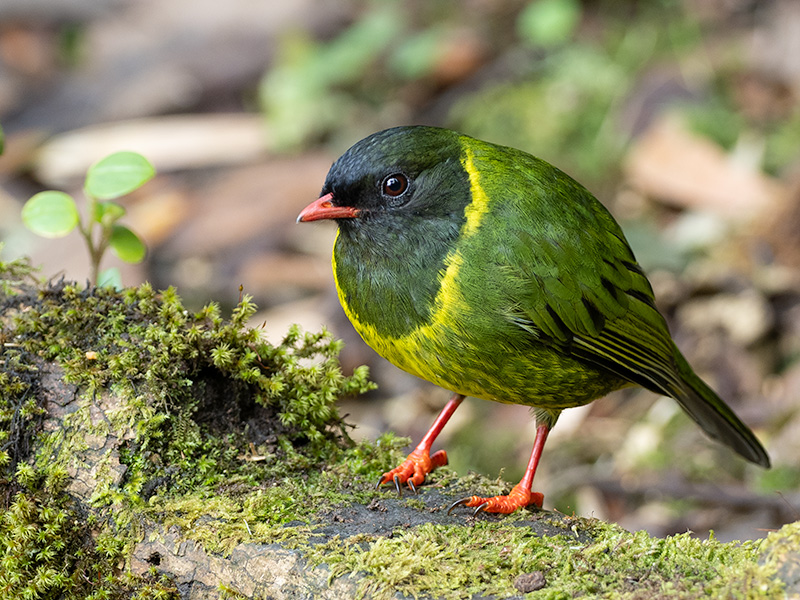
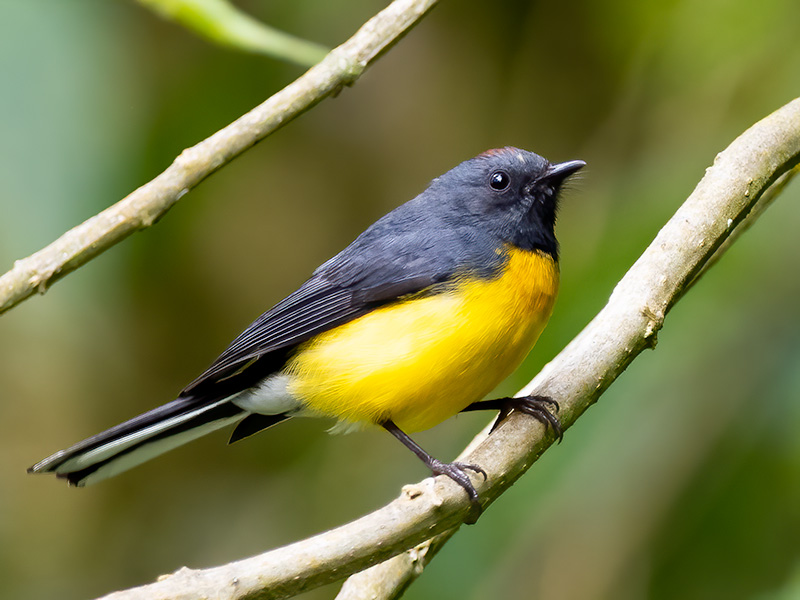
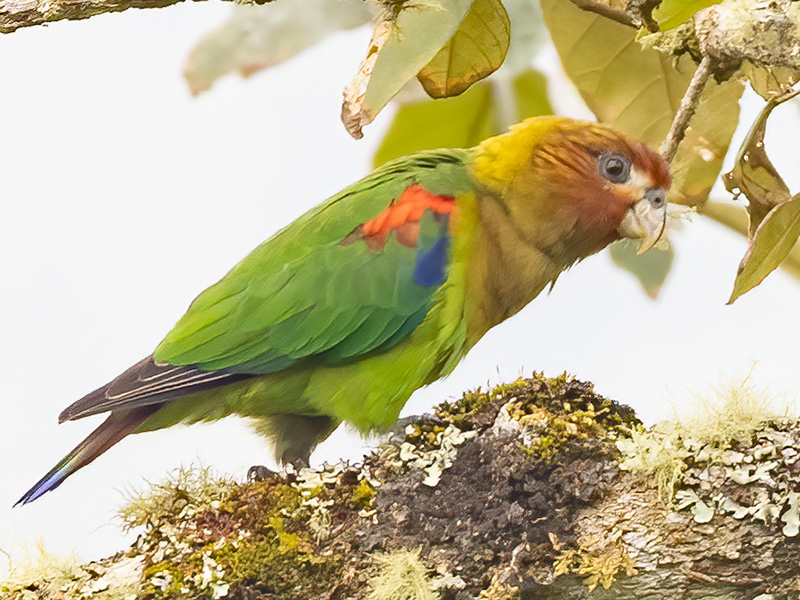
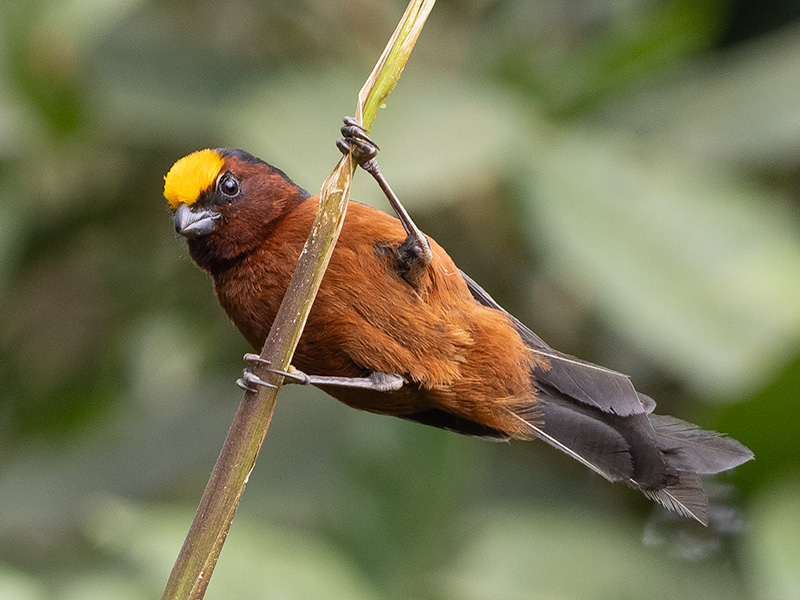
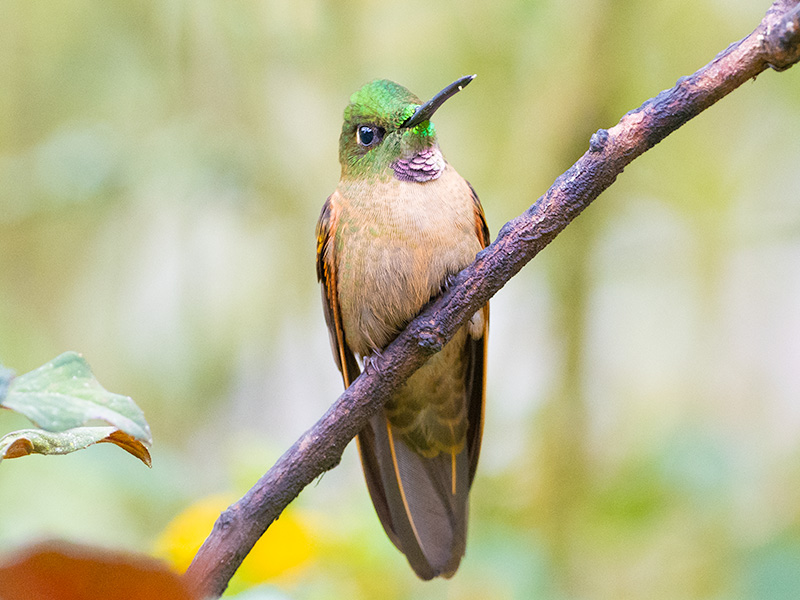
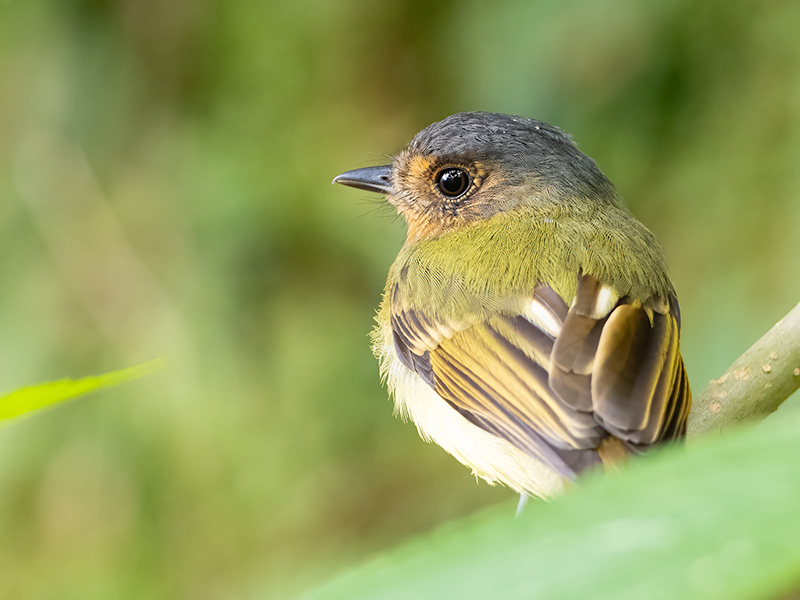
After lunch we spent time at the hummingbird feeders near the lodge, where we saw Lesser Violetear, Long-tailed Sylph, White-bellied Woodstar, Buff-tailed Woodstar and Brozy Inca.
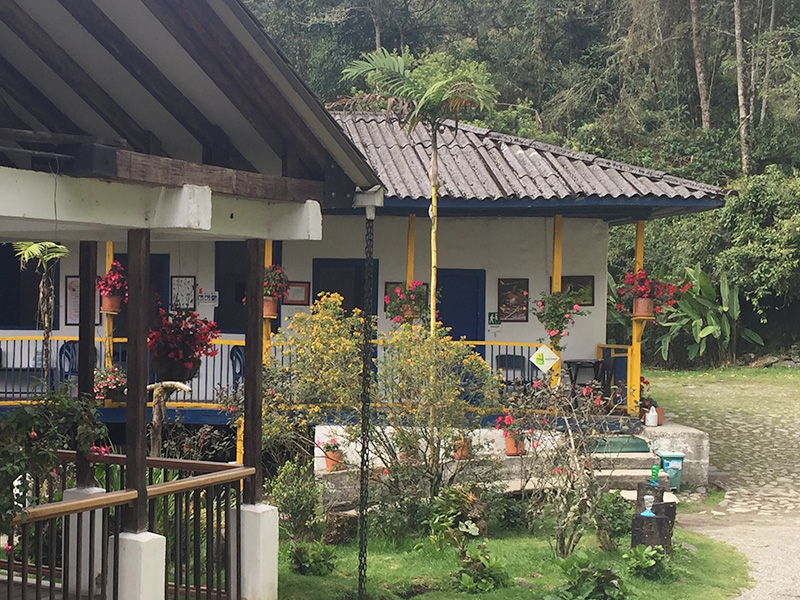
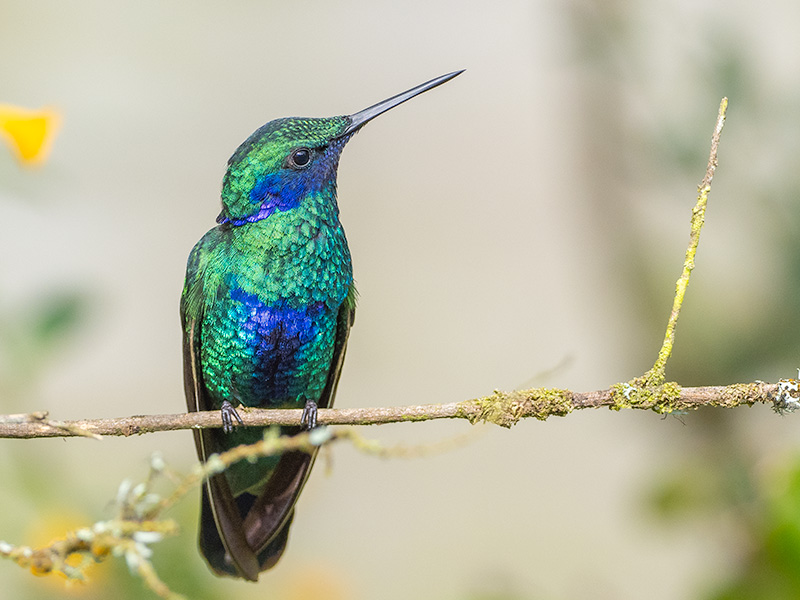
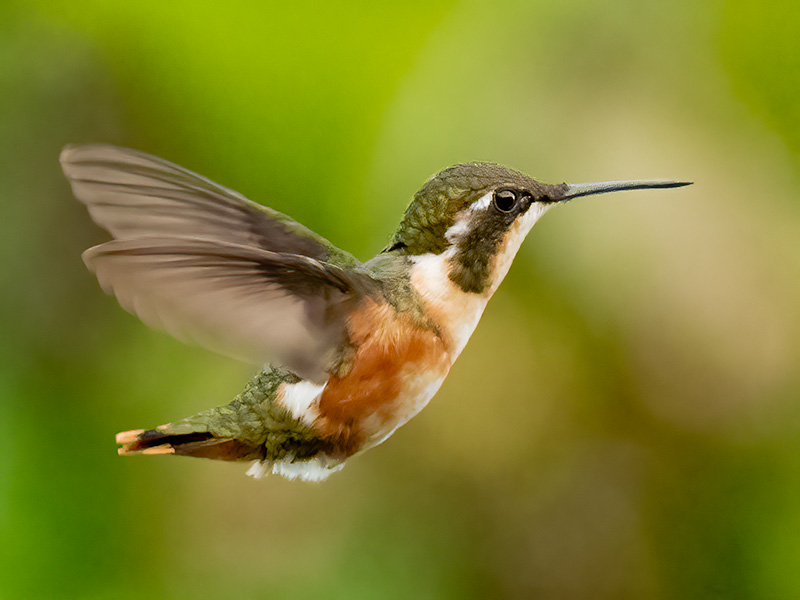
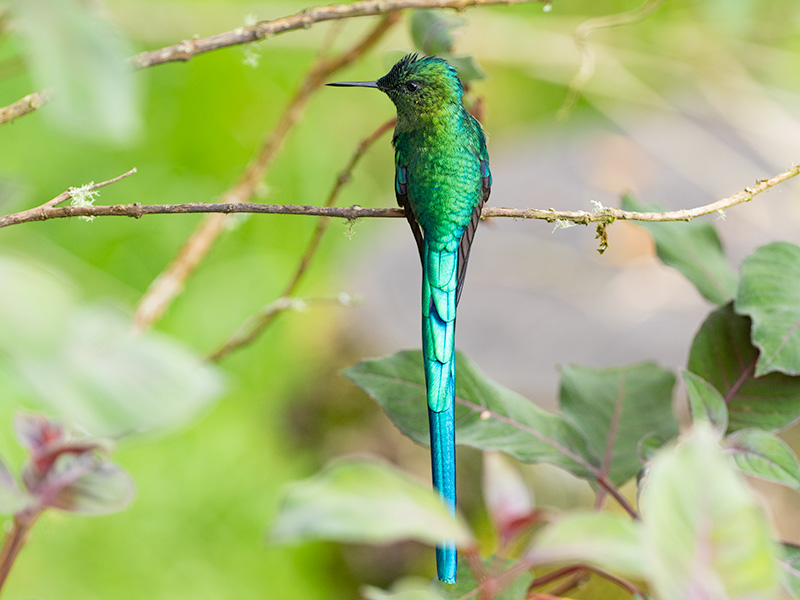

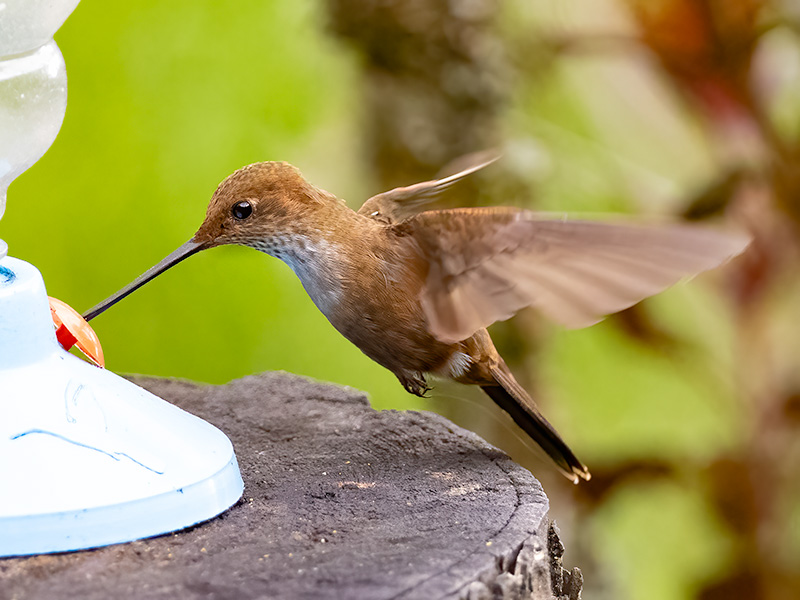
After a second night at the Rio Blanco lodge on Day 15 (3 March) we drove to the Hacienda El Bosque, which is a working farm that has also established a number of feeding stations to draw in antpittas and other species. The highlight was undoubtedly the Rufous and Crescent-faced antpittas that obligingly posed for us. But there were other good birds on the feeders, including Masked Flowerpiercer, Sword-billed Hummingbird, Grey-browed Brushfinch, Black-crested Warbler and Brown-backed Chat-tyrant.
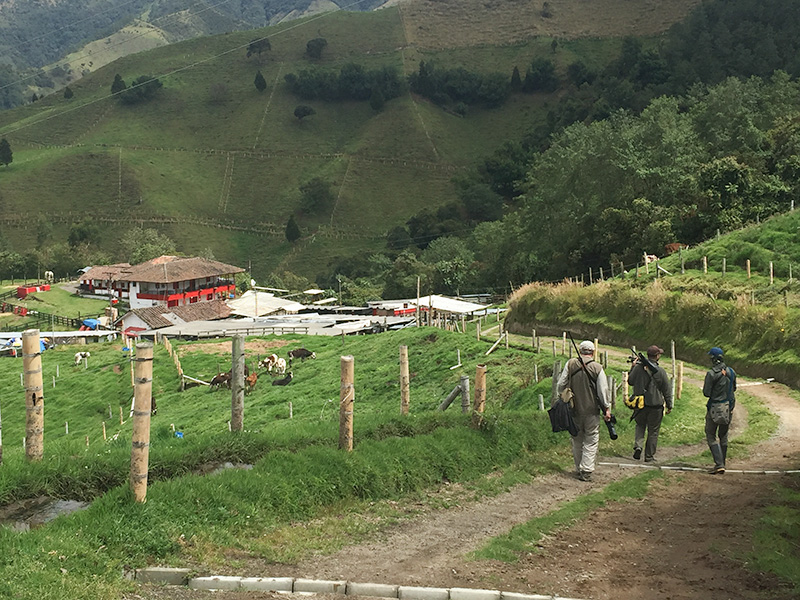
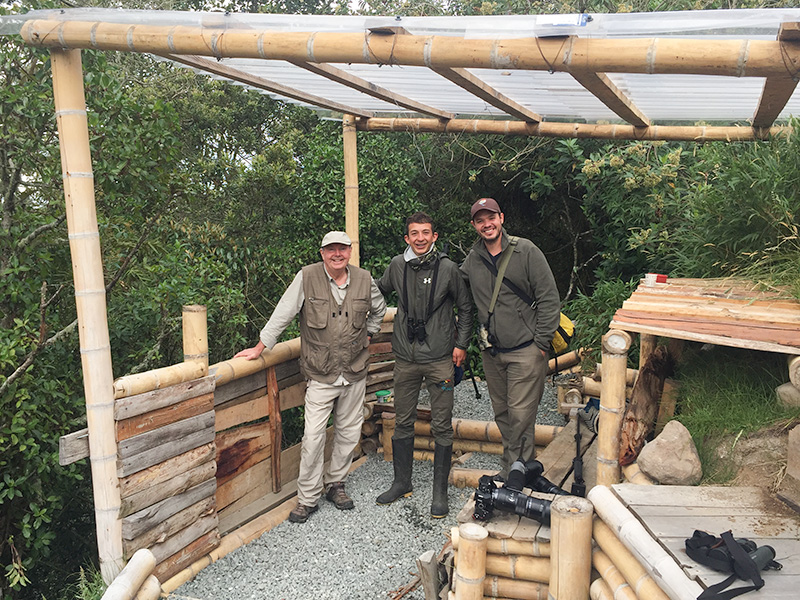
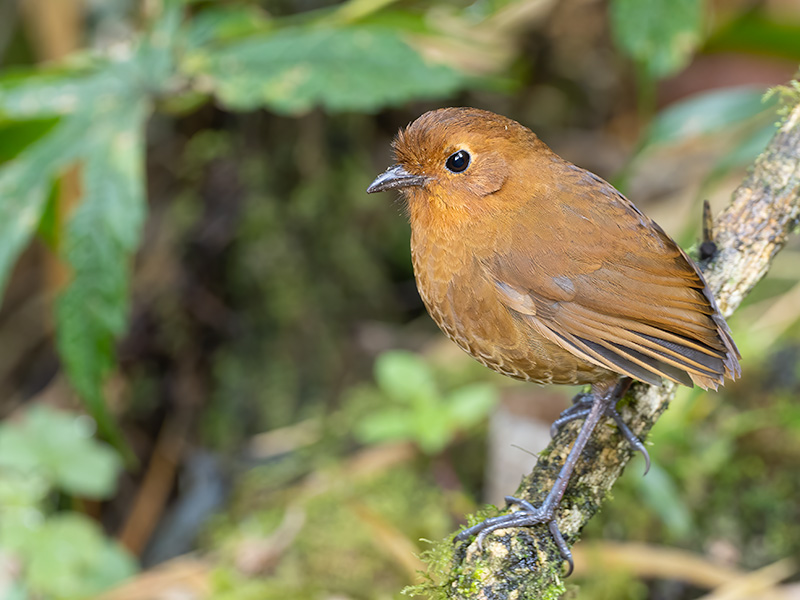
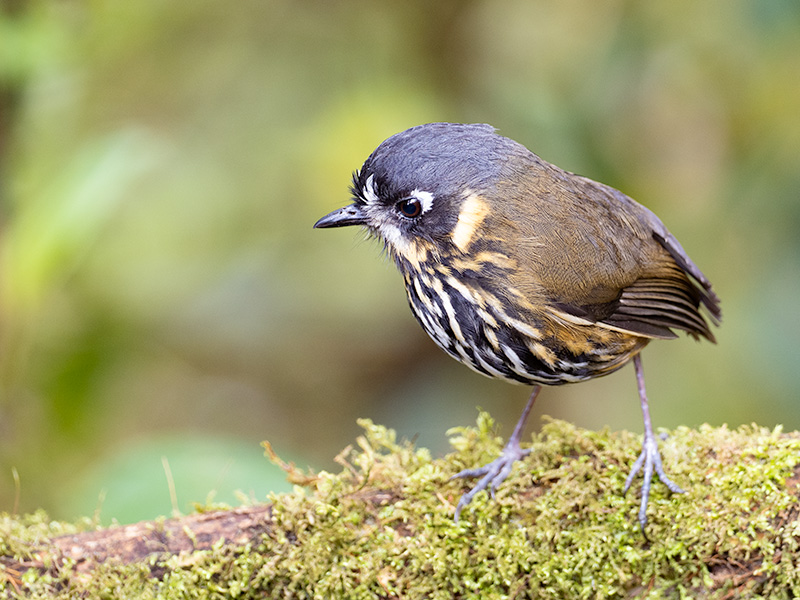
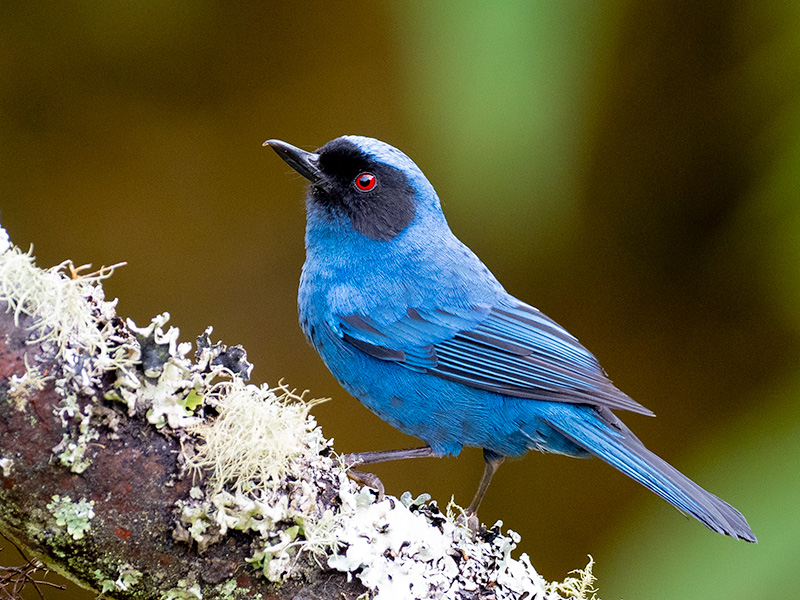
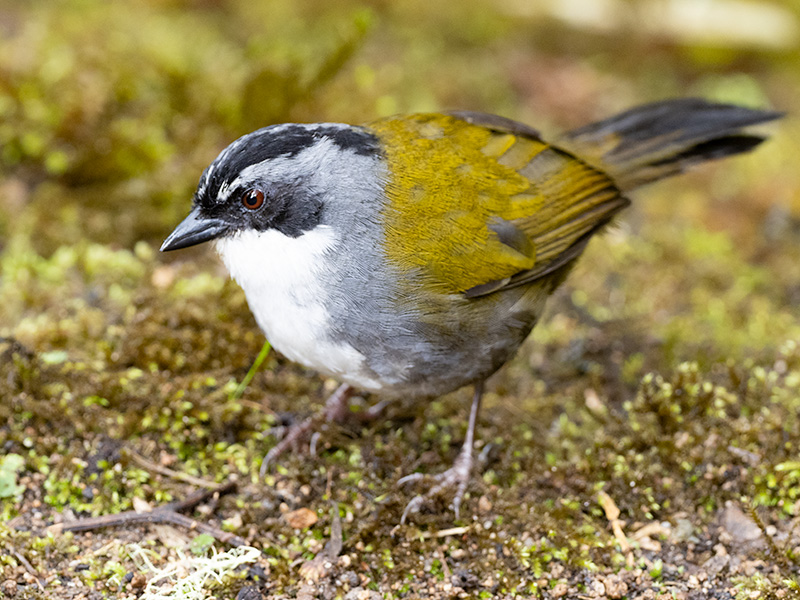
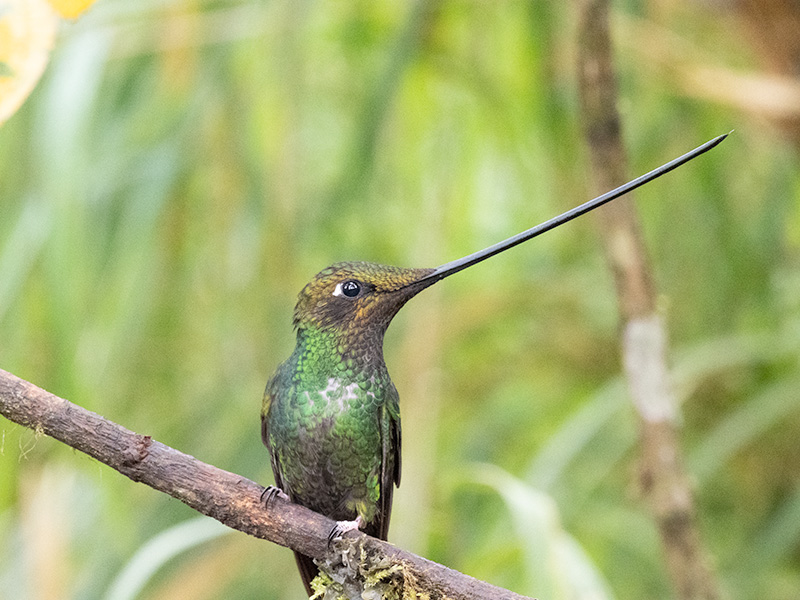
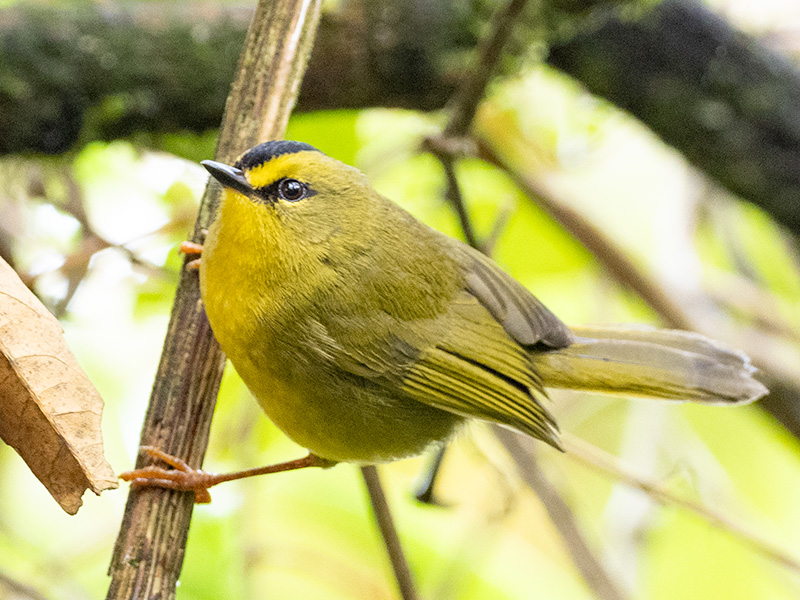
We next travelled to the Los Nevados National Park in search of the Buffy Helmetcrest, a species that is only found in the paramo of the central Andes of Colombia. With a population of less than 1,000 it’s extremely rare and was a major target of the trip. However, we were very luck in that the bird appeared just next to the car park at the park’s visitor centre almost as soon as we’d got out of the car.
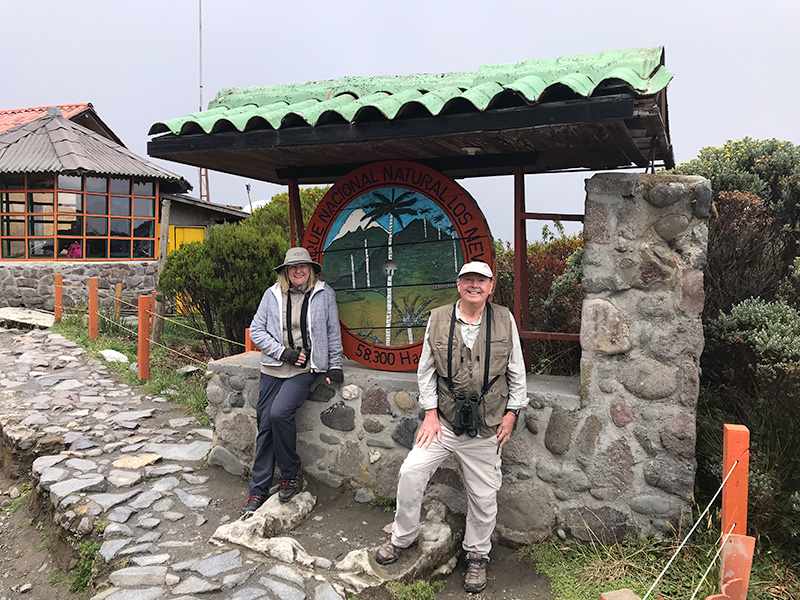
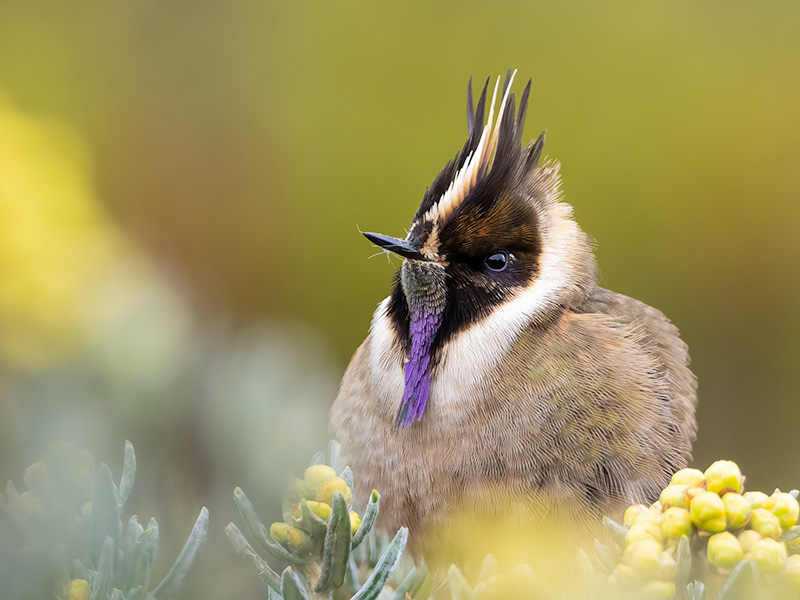
After our exciting encounter with the Buffy Helmetcrest we then moved to the Hotel Termales del Ruiz, where we were going to spend the night. Originally built in 1937, it is now a very comfortable hotel with an excellent restaurant, thermal pools, and importantly for us, many bird feeders that bring in hummingbirds and many other species. Soon after lunch we were taking photographs next to the feeders and saw Scarlet-bellied Mountain-tanager, Shining Sunbeam, Lacromose Mountain-tanager, Pale-naped Brushfinch and Mountain Velvetbreast.
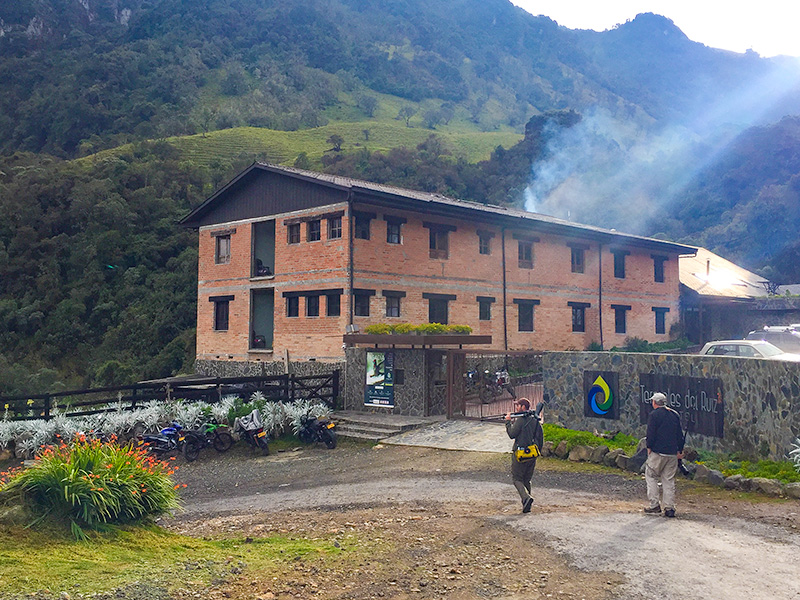
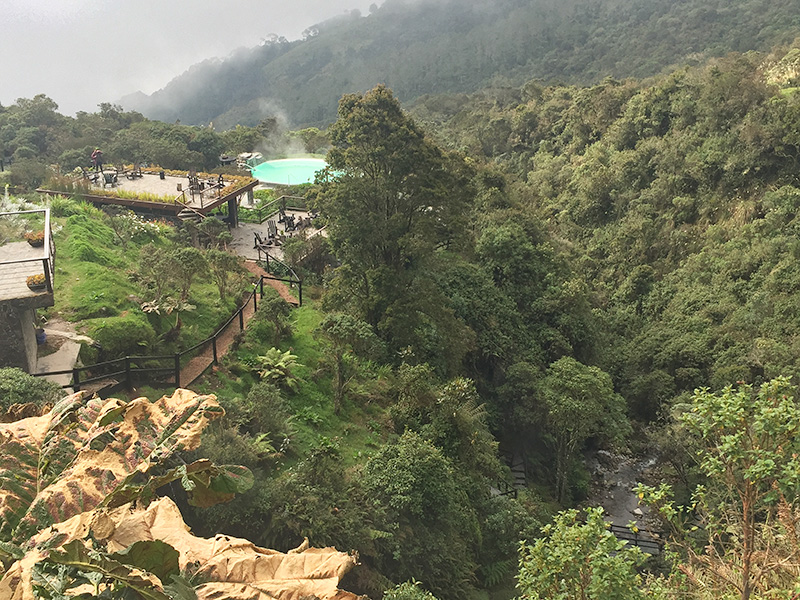

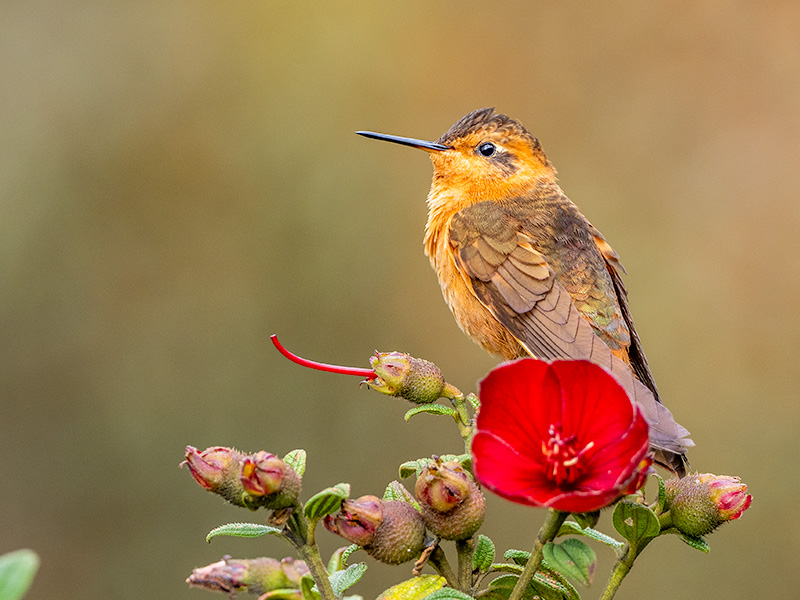
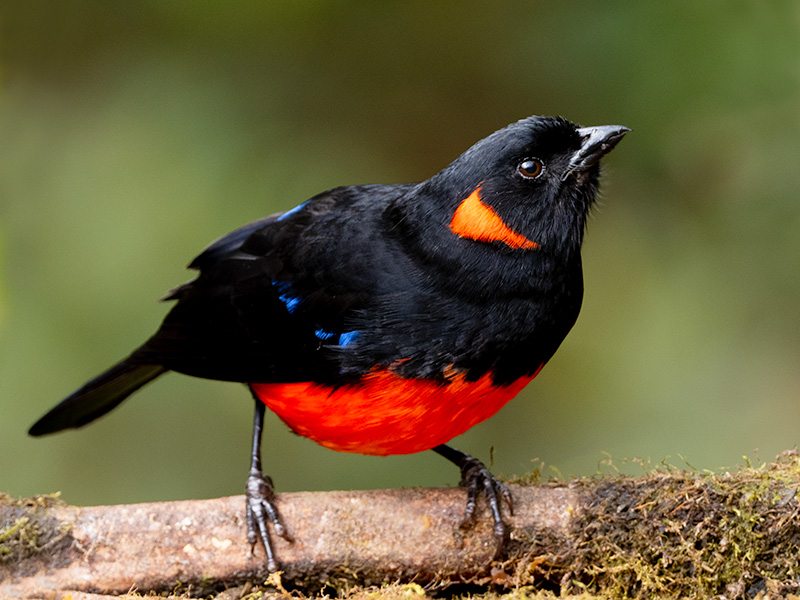
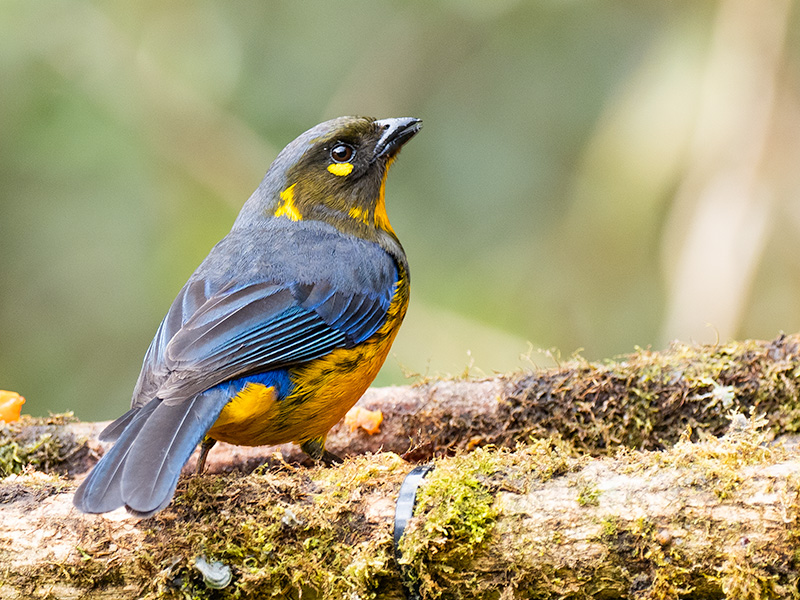
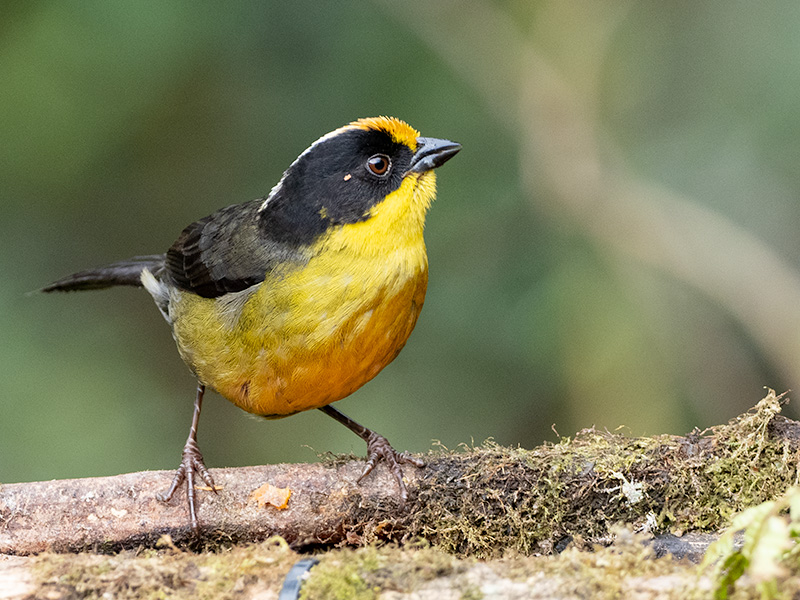
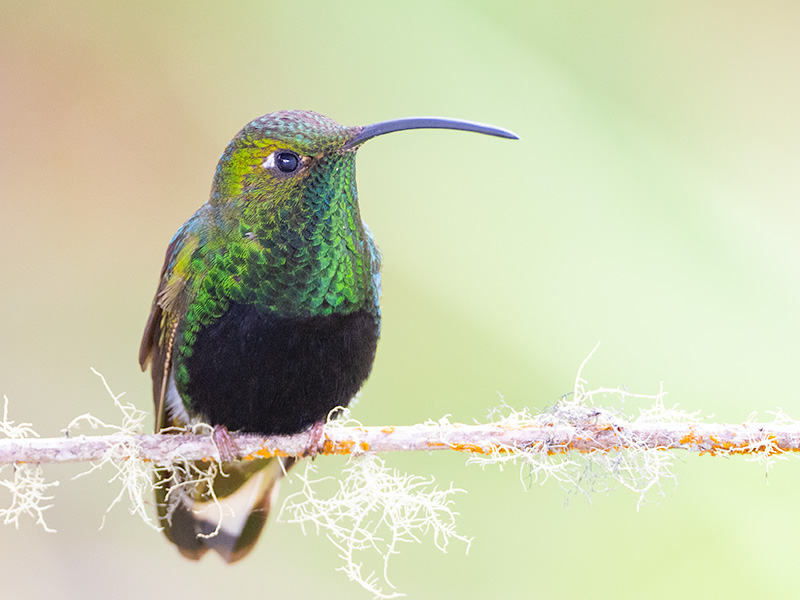
On Day 16 (4 March) we did some early morning birding around the Hotel Termales del Ruiz and saw the Buff-winged Starfrontlet, Sedge Wren and Crimson-mantled Woodpecker. We then started the long drive to Cali but stopped at a number of places along the way, including a high elevation site where we saw the Stout-billed Cinclodes. A very productive site we visited on the outskirts of Cali was Sonso Lake beside the Cauca River. There we saw Common Potoo, Apical Flycatcher, Greater Ani, Streaked Flycatcher and Smooth-billed Ani.
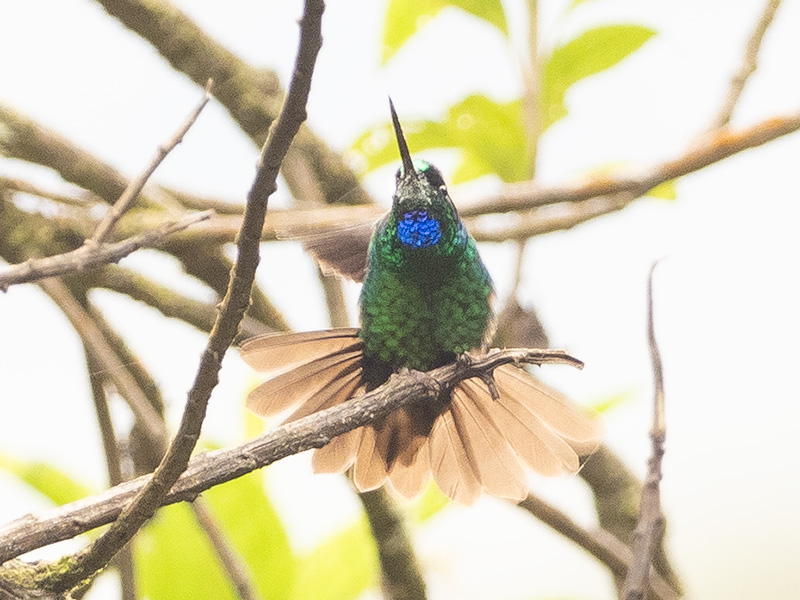
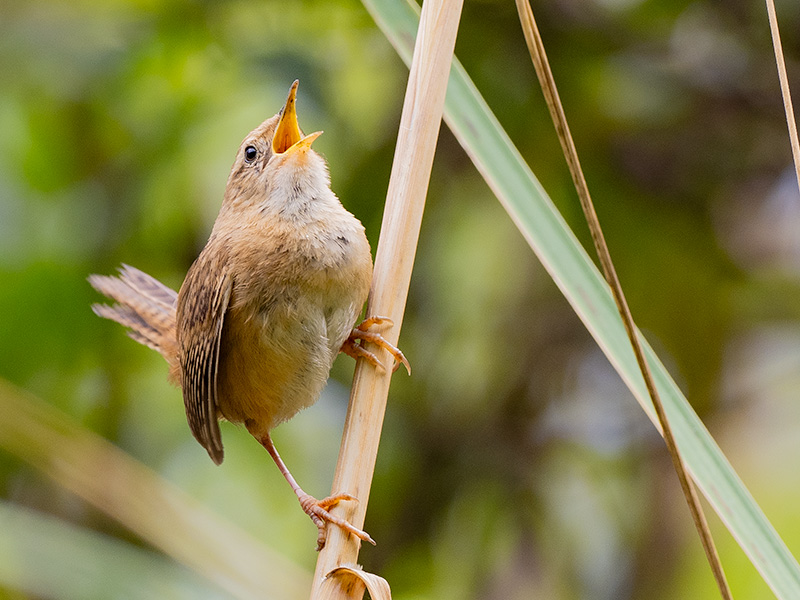
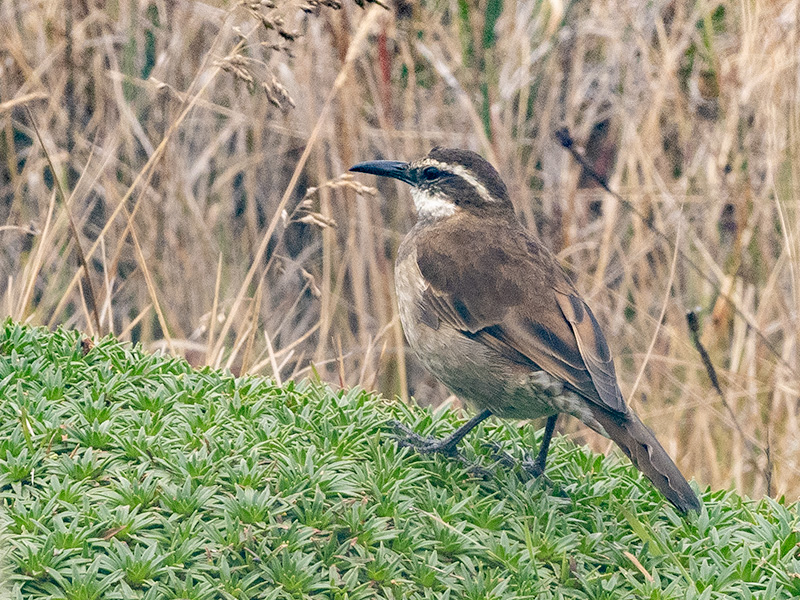
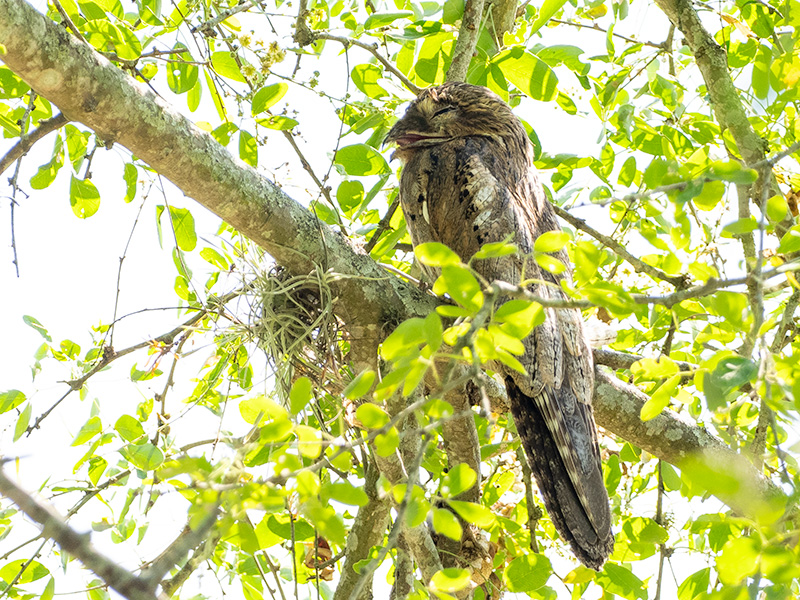
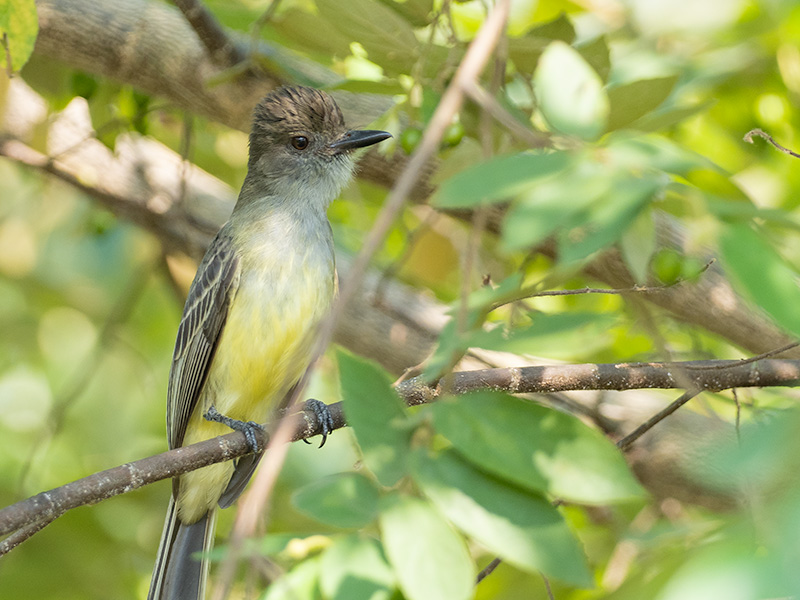
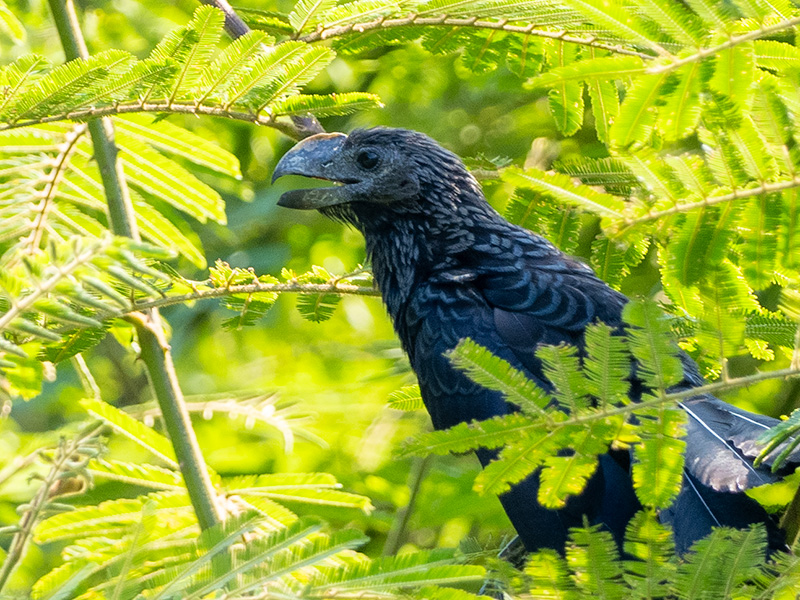
After a night in Cali, on Day 17 (5 March) we drove to the famous birding destination of the Anchicaya Road. This used to be the major route between Cali and the coastal town of Puertoventura, but the building of a new highway means that the road it little used today and is therefore quiet and ideal for birding. We first visited Donna Dora’s restaurant, which has many feeders that draw in a wide range of species – and birders. There we saw Toucan Barbet, Golden Tanager, Orange-bellied Euphonia, Silver-throated Tanager, Scrub Tanager and Flame-rumped Tanager.
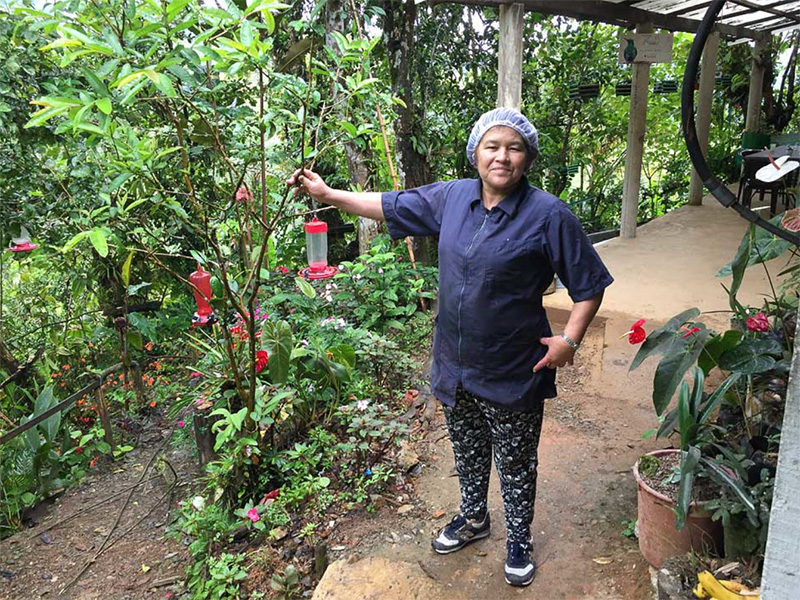
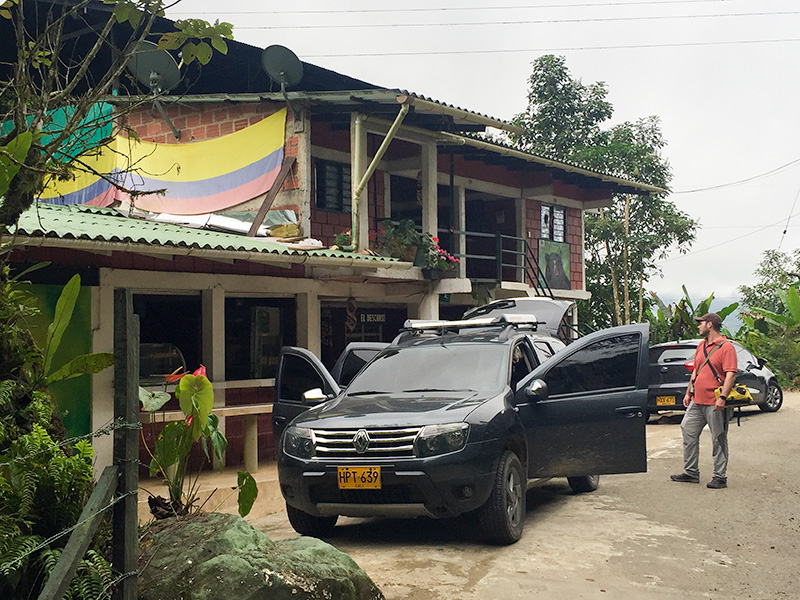
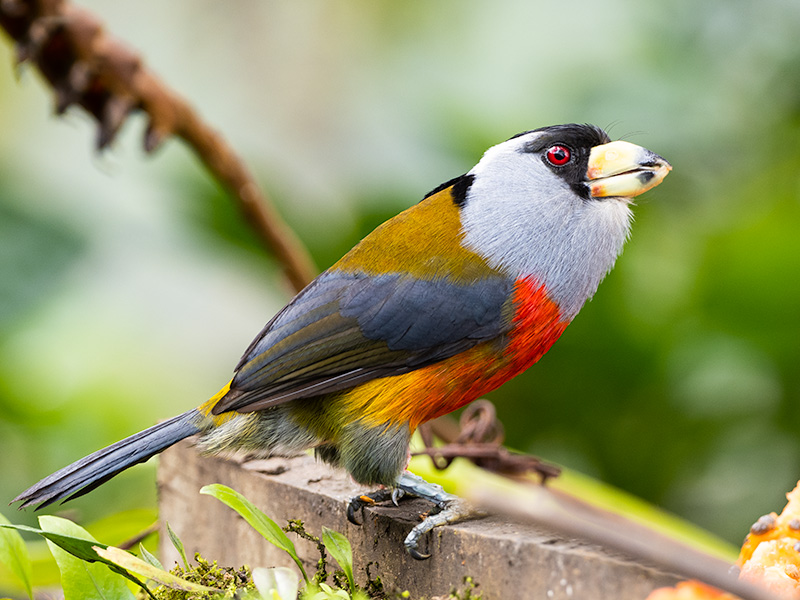
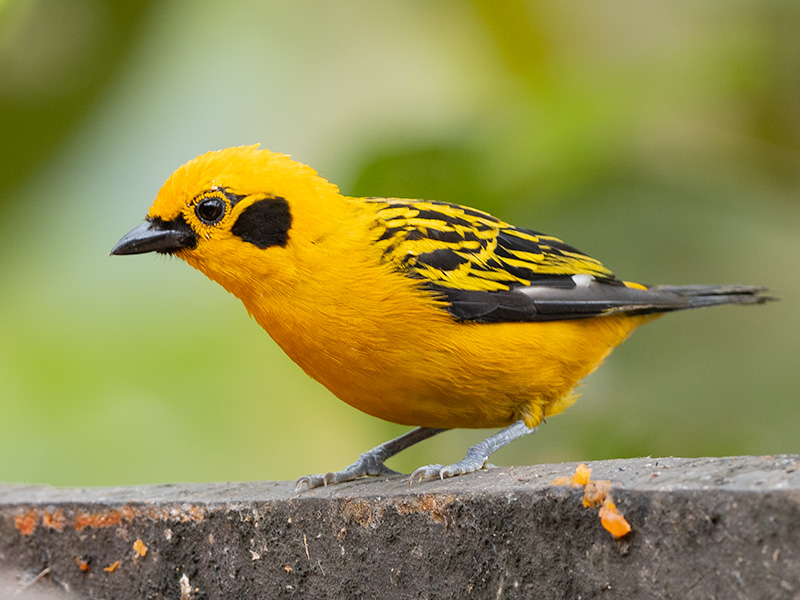
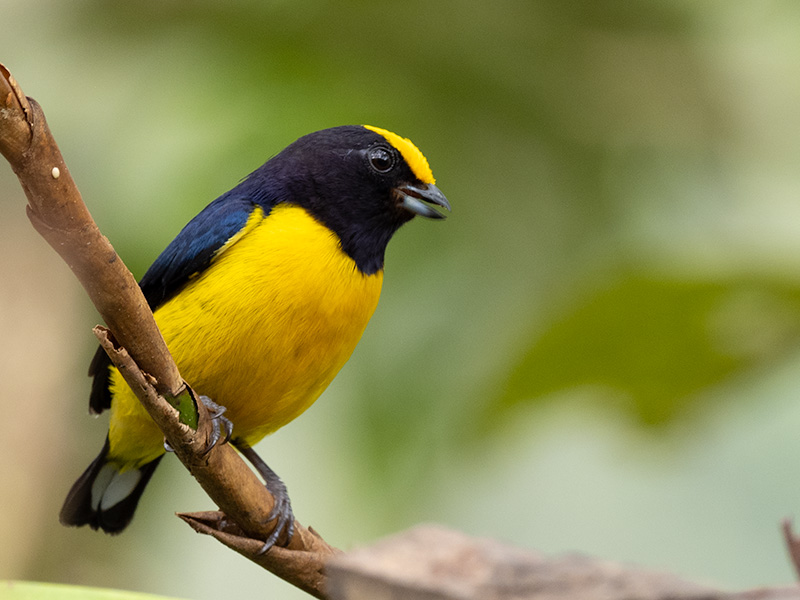
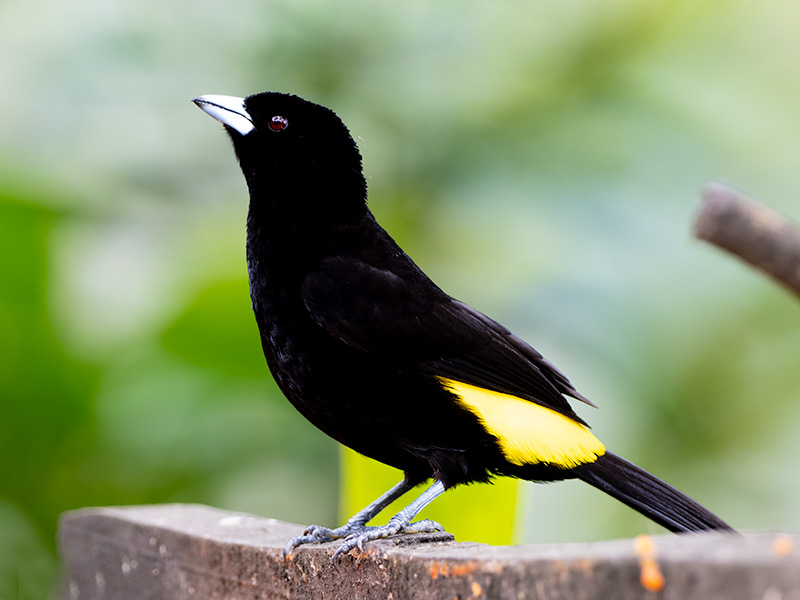
Further along the Anchicaya Road we were lucky enough to see the Lyre-tailed Nightjar roosting beside the road, along with Scale-crested Pygmy-tyrant, Pacific Flatbill, Yellow-throated Bush Tanager and Grey-and-gold Tanager.
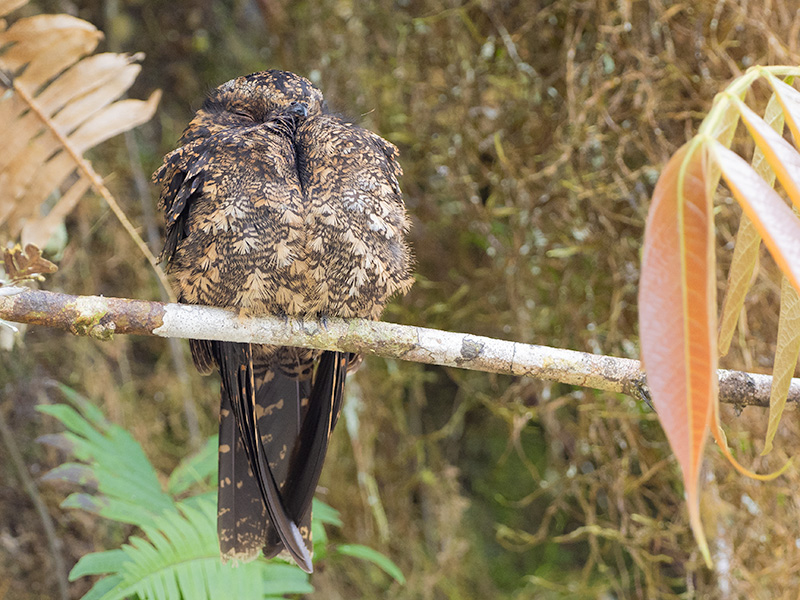
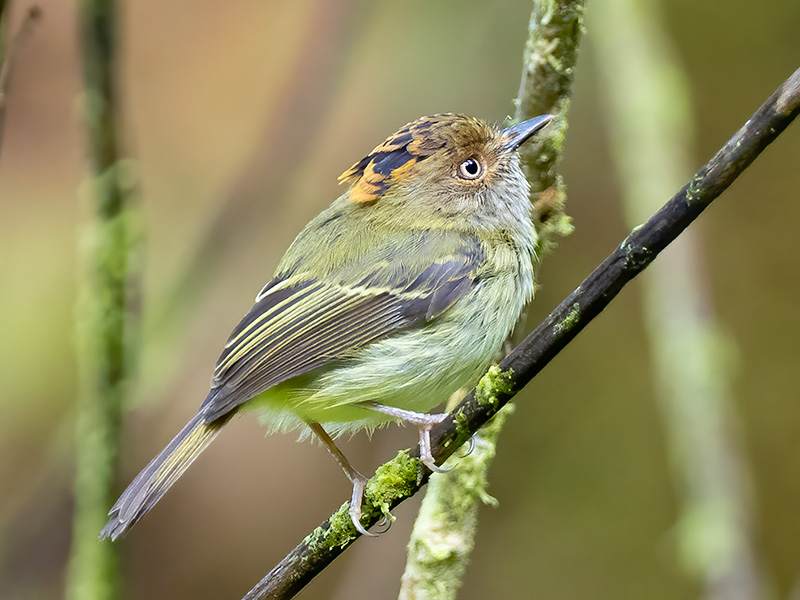
After a night at the Hotel El Campanario in El Queremal we spent Day 18 (6 March) birding the lower parts of the Anchicaya Road. This was a very productive day with us seeing Choco Toucan, Lemon-spectacled Tanager, White-tipped Sicklebill, Golden-chested Tanager, Scarlet-and-white Tanager, Grey-and-gold Tanager and Tawny-crested Tanager.
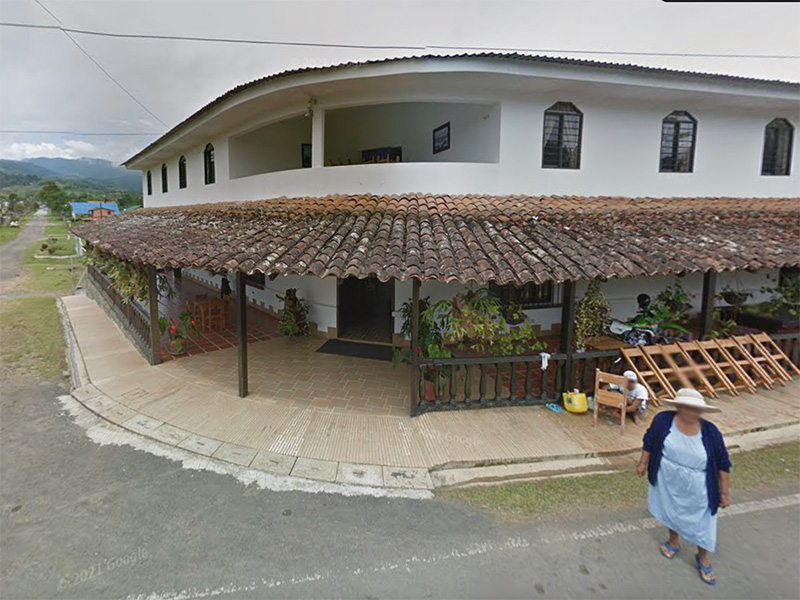

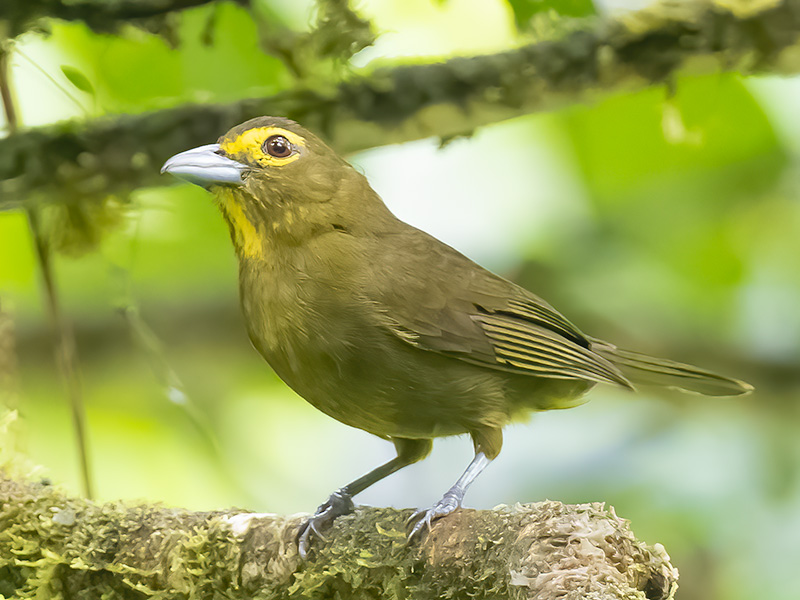
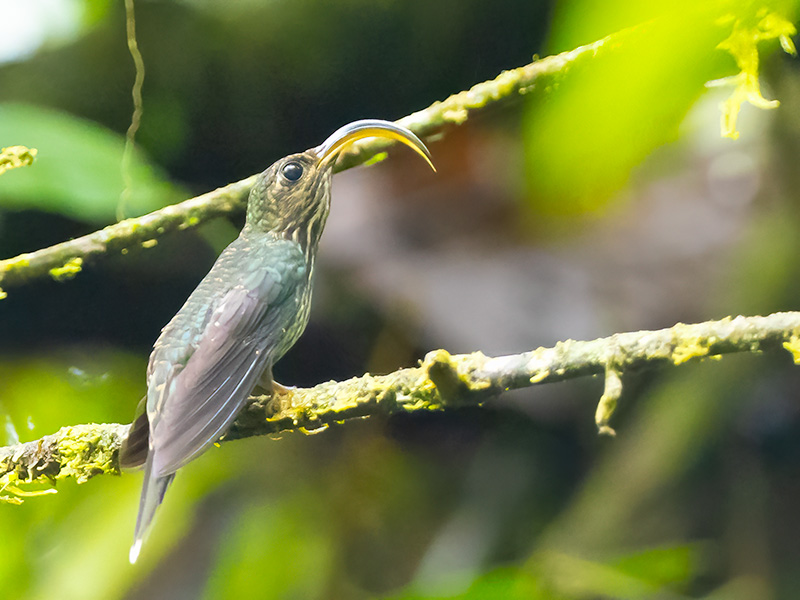
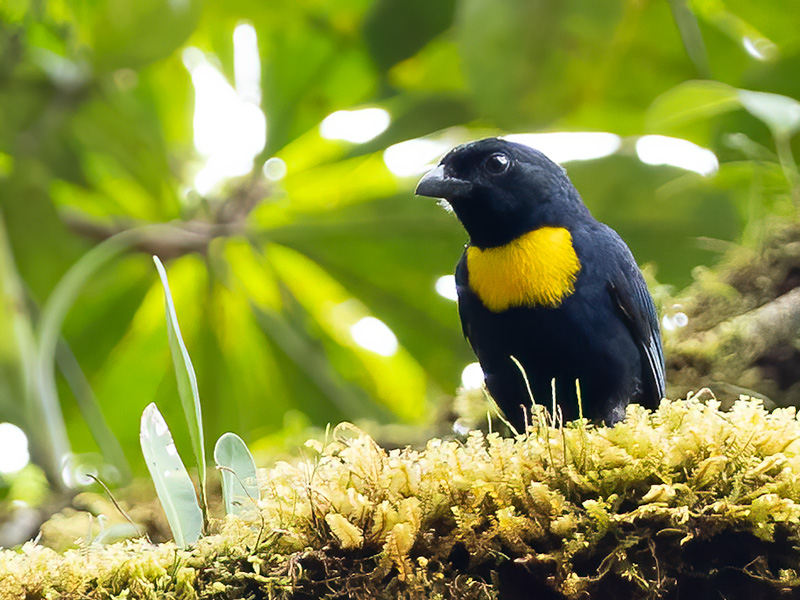
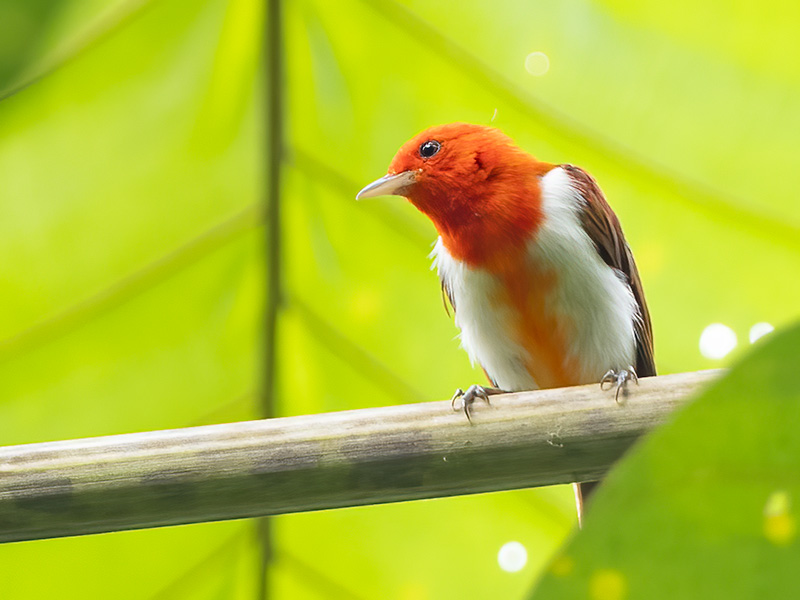
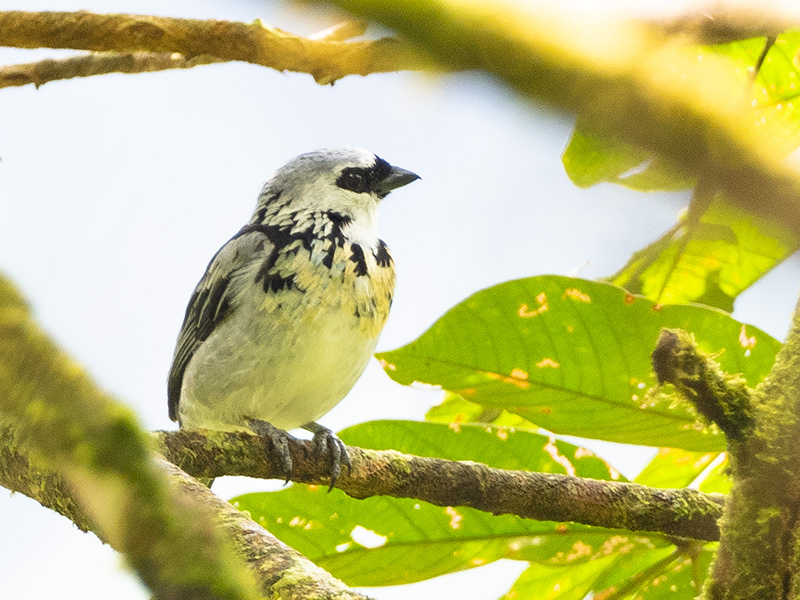
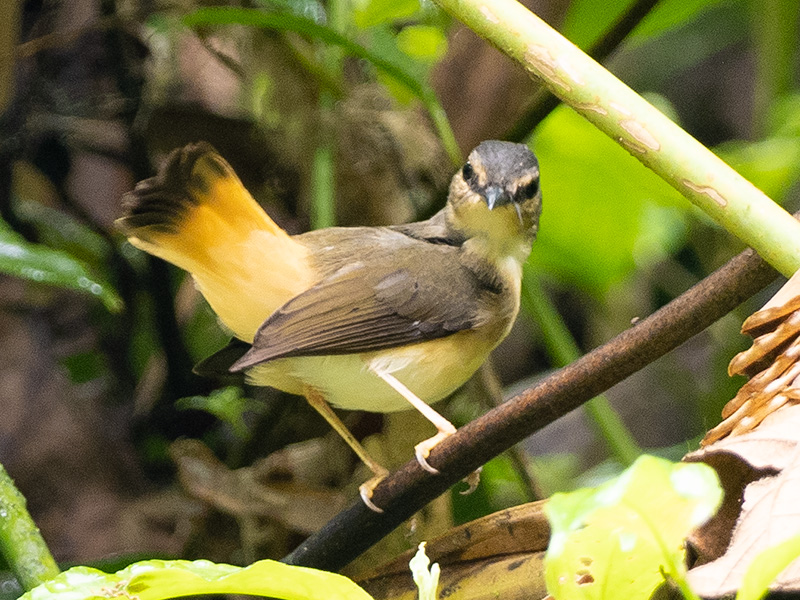
We spent the last night of the trip back in Cali and then squeezed in some birding during the following morning before we flew back to the UK. Our visit to the Finca Florida el Bosque de las Aves reserve outside Cali at the famous Km 18 provided some of the best photographic opportunities of the trip. The reserve has some well-stocked feeders and hides at near-optimal distance to get frame-filling photographs of the birds. They also provide an excellent breakfast at the end of your visit.
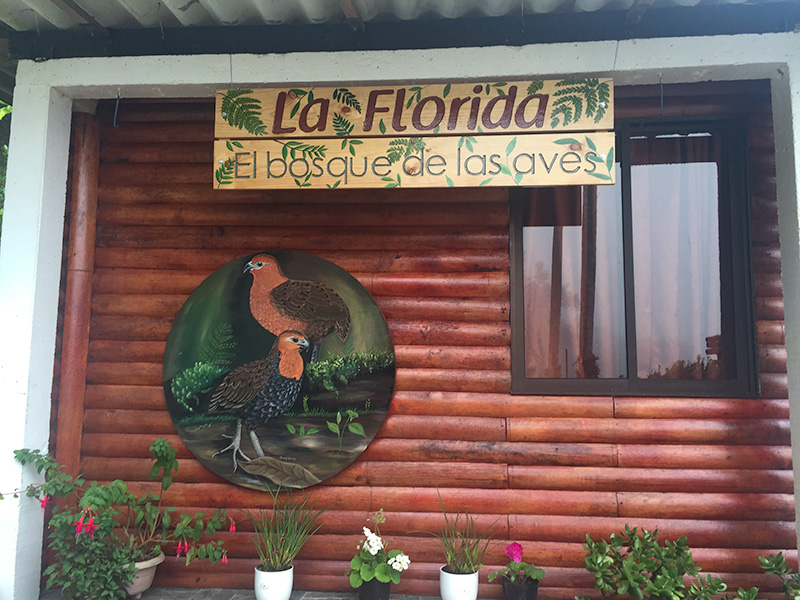
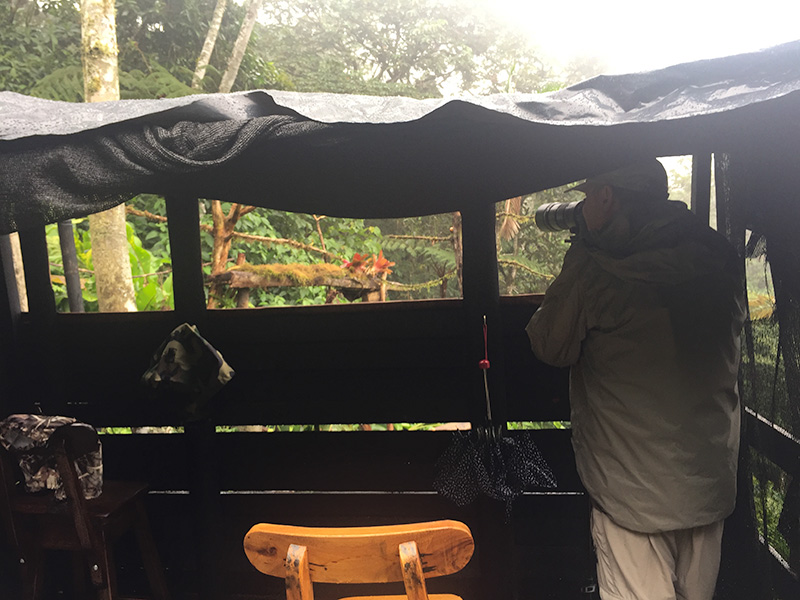
An early highlight was seeing the Chestnut Wood Quail, which is a bird endemic to Colombia. Then moving to the main hide we got great shots of Red-headed Barbet, Multicoloured Tanager, Saffron-crowned Tanager, Black-and-yellow Tanager and Trinidad Euphonia.
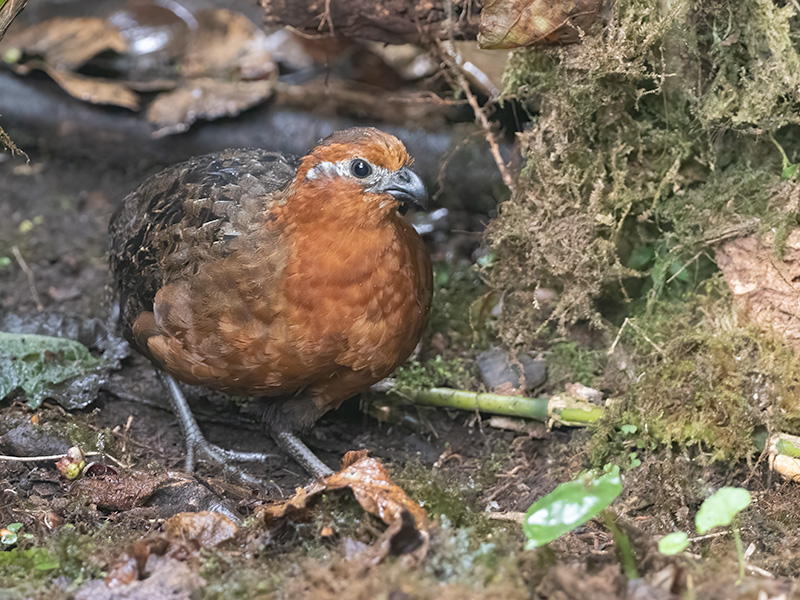
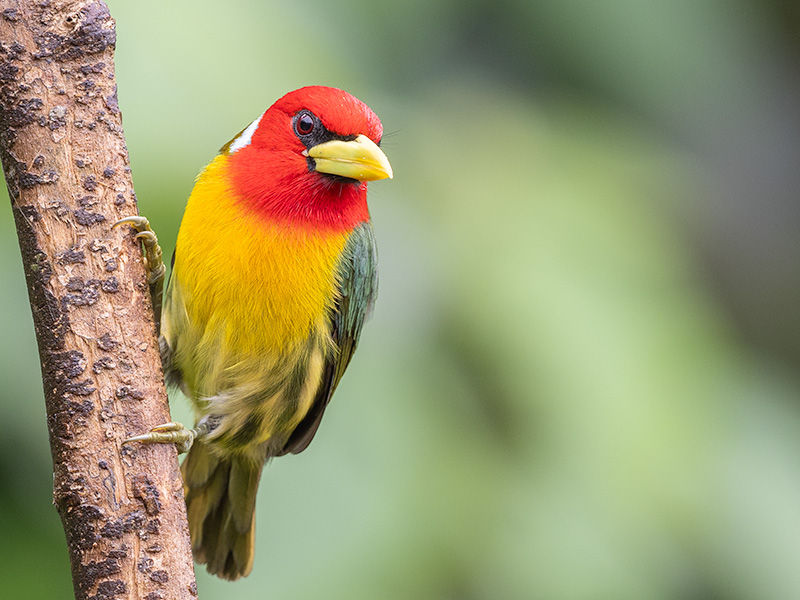
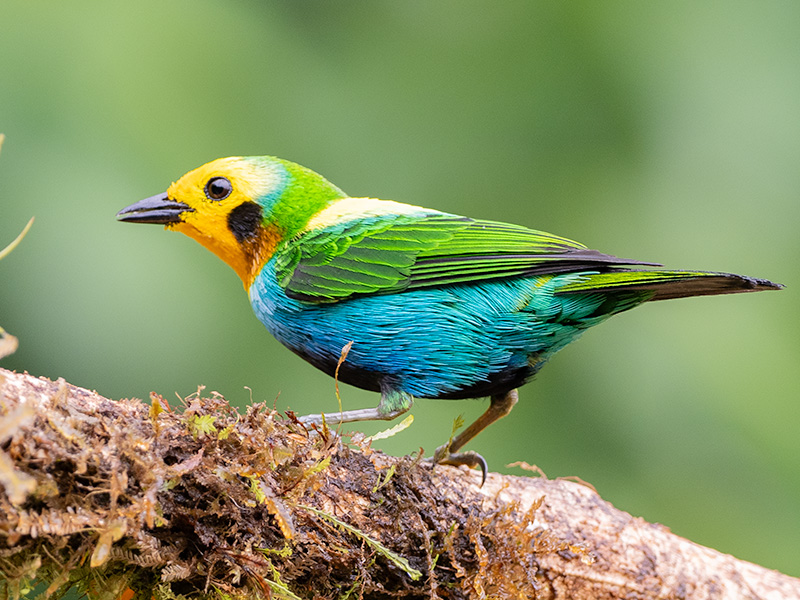
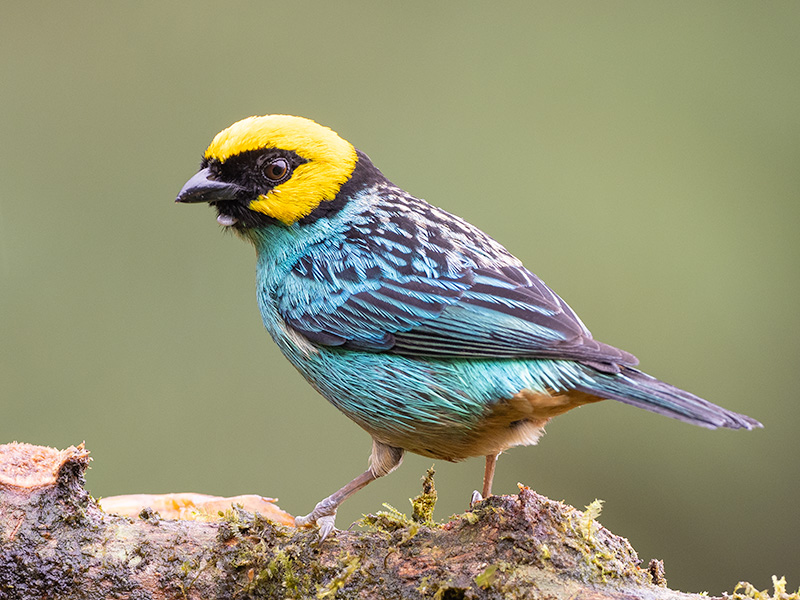
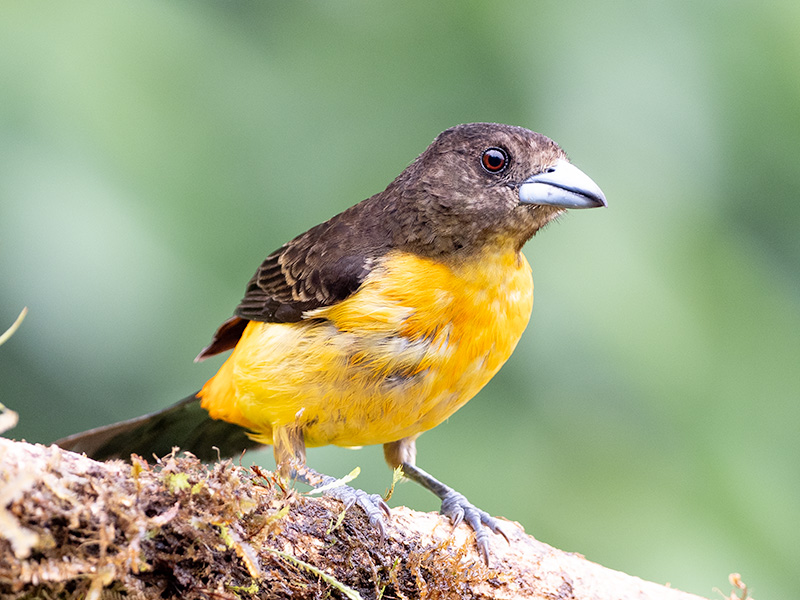
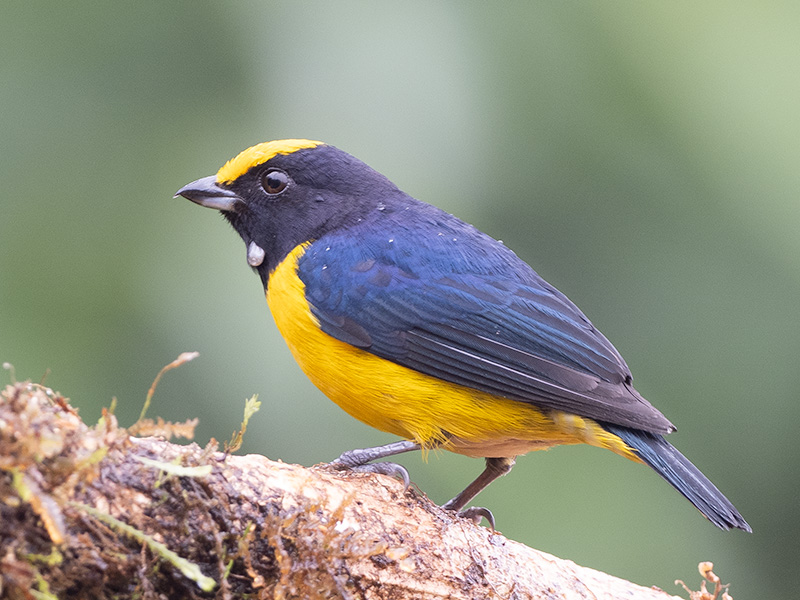
Our final stop was at the Finca Alejandria “El Paraiso de Los Colibries” reserve, which had a couple of dozen hummingbird feeders along with fruit-laden logs that attracted tanagers and other species.
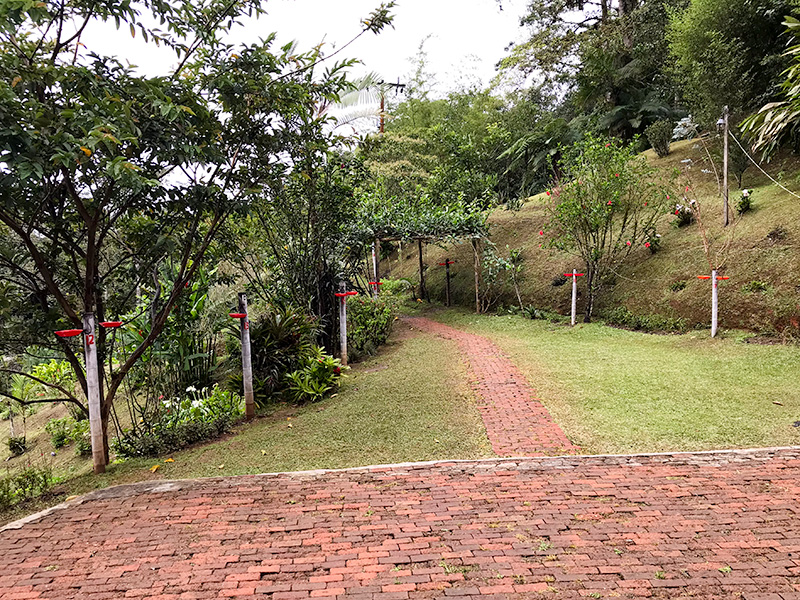
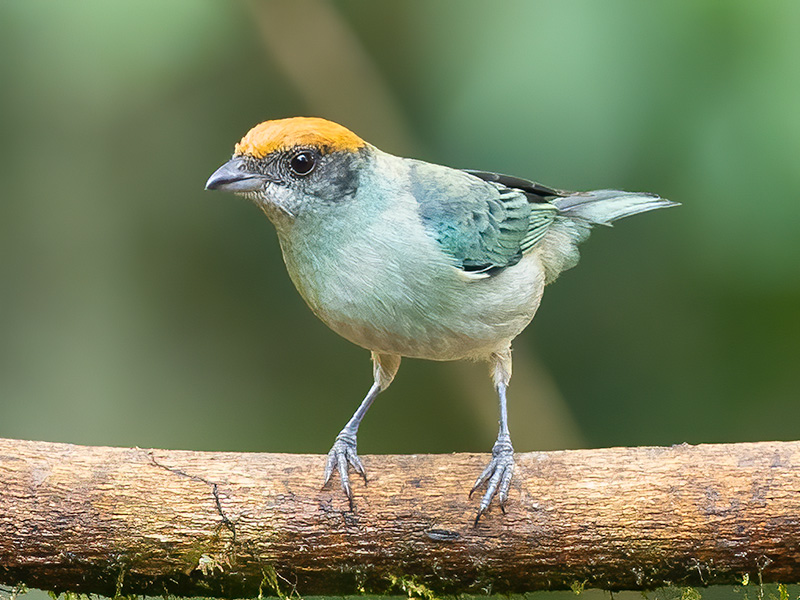
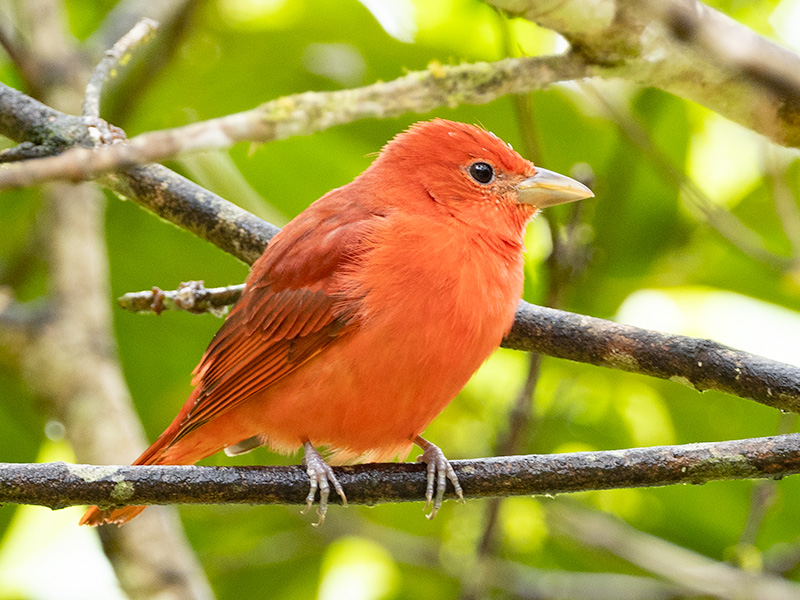
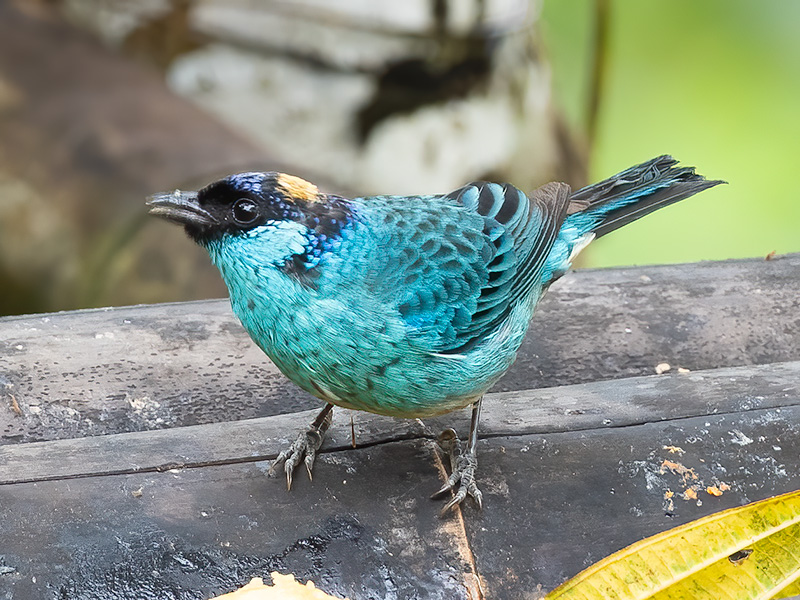
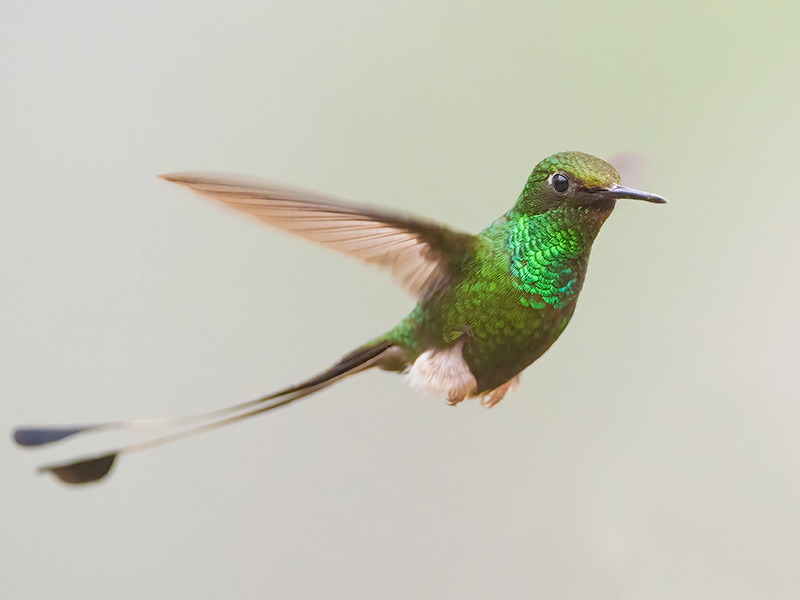
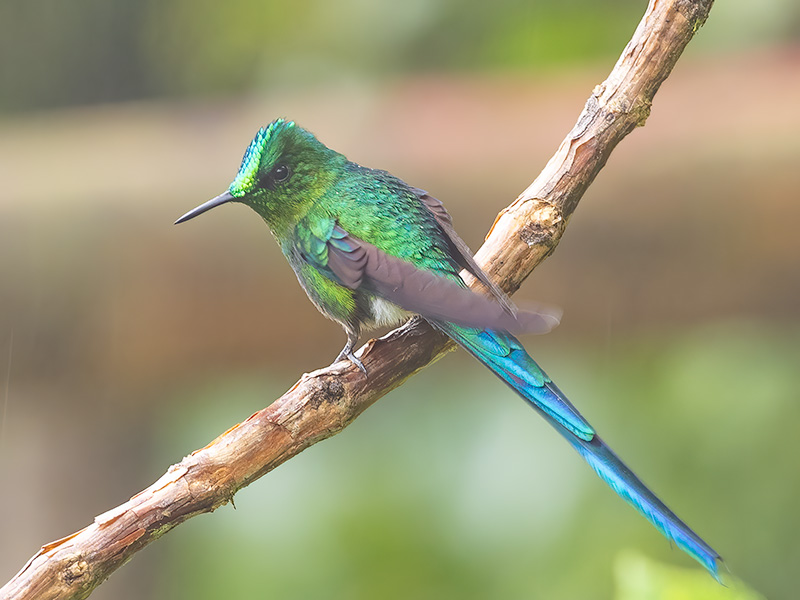
This has a great final birding session on an outstanding trip. With a laptop full with more than 30,000 photographed we headed back to the UK looking forward to weeks or more likely months of fun in sorting and processing all the images and re-living the many great moments. Our excellent guide Giancarlo Ventolini played a big part in making this such as successful birding trip and we extent our thanks to him.